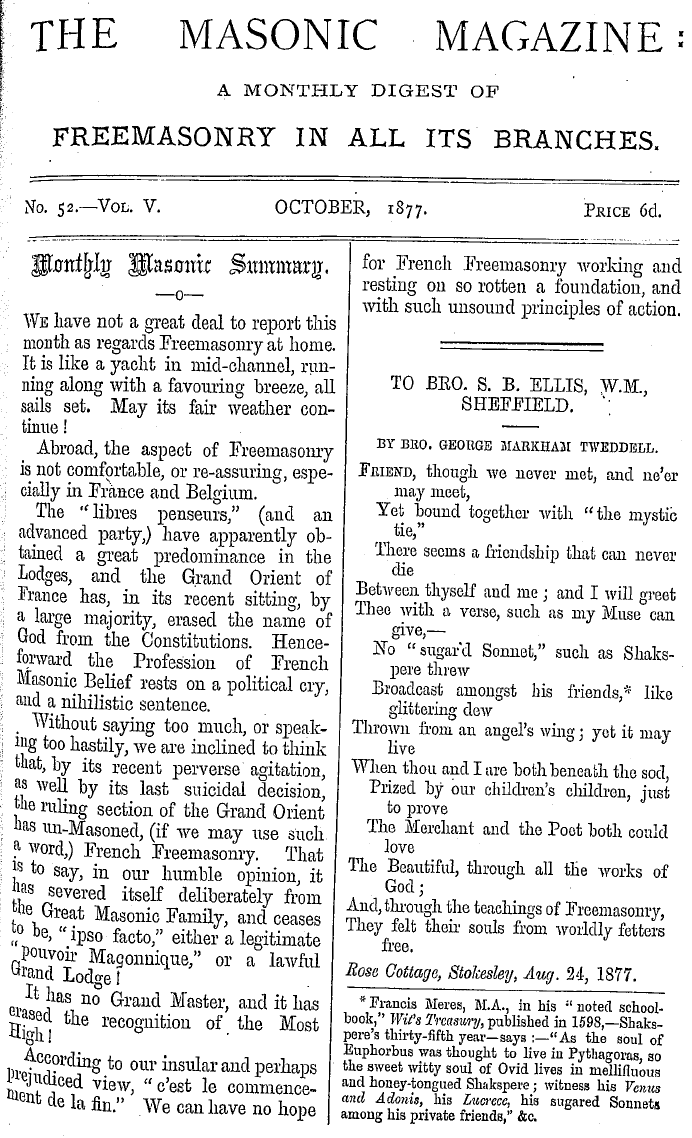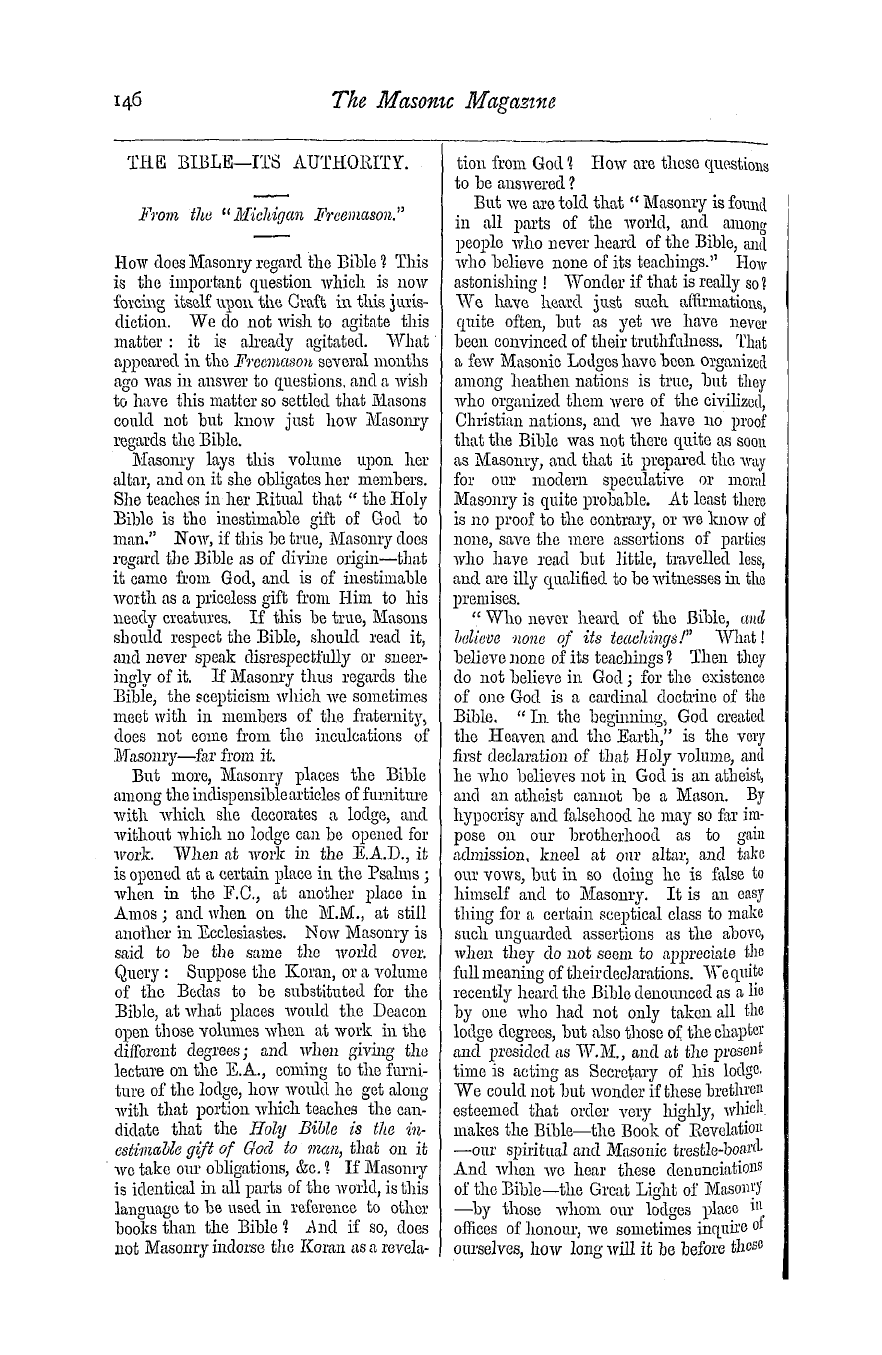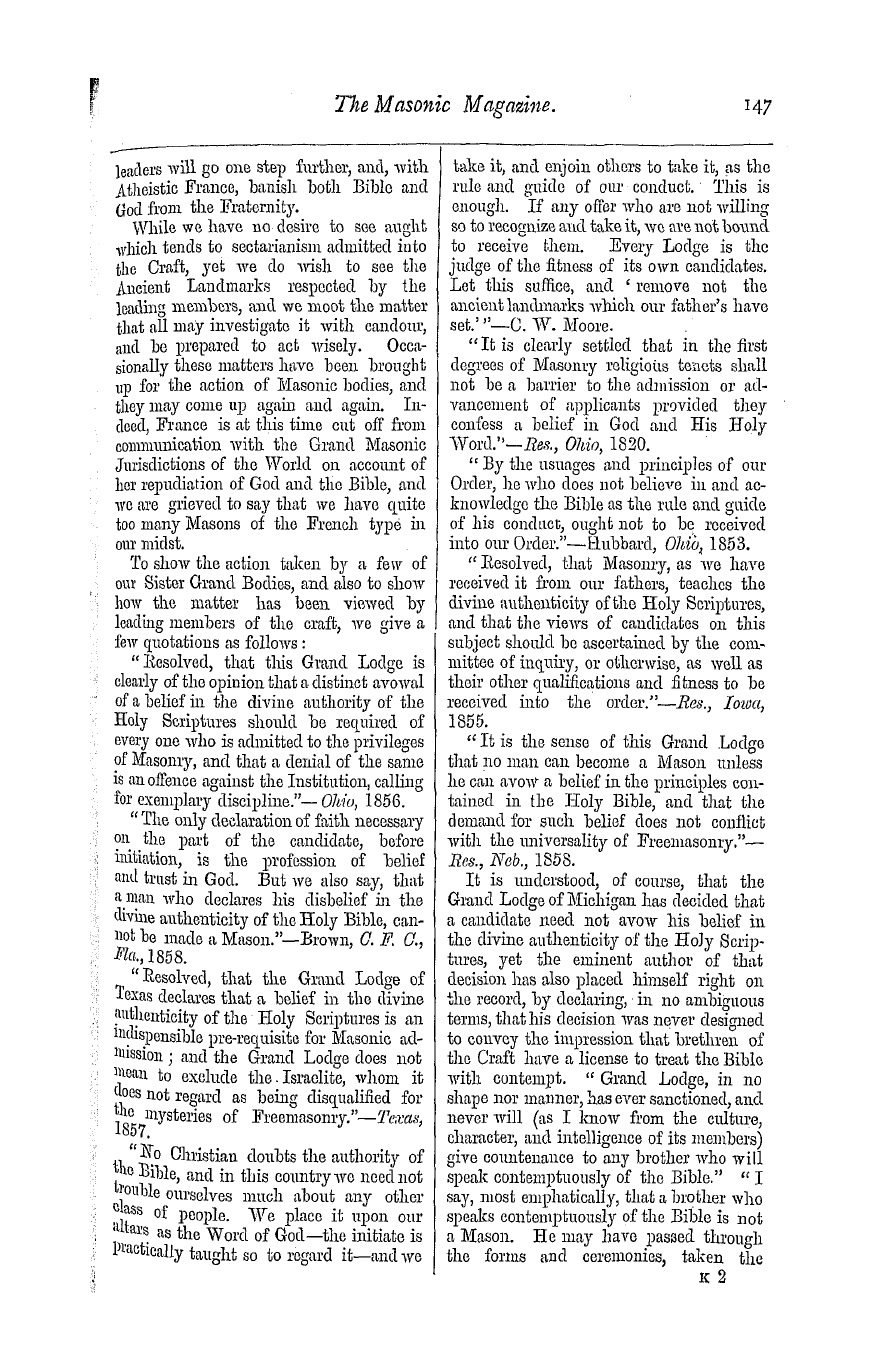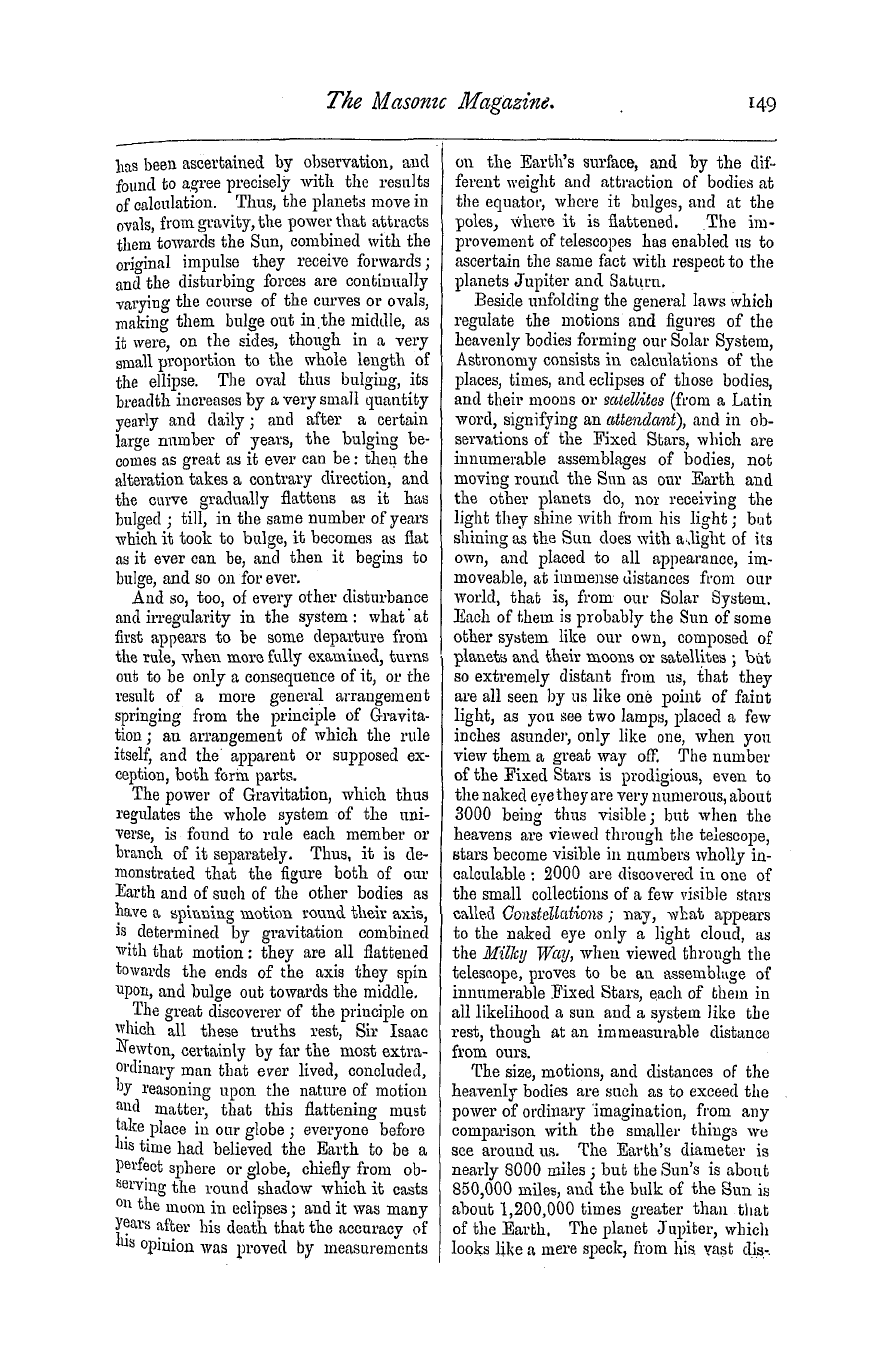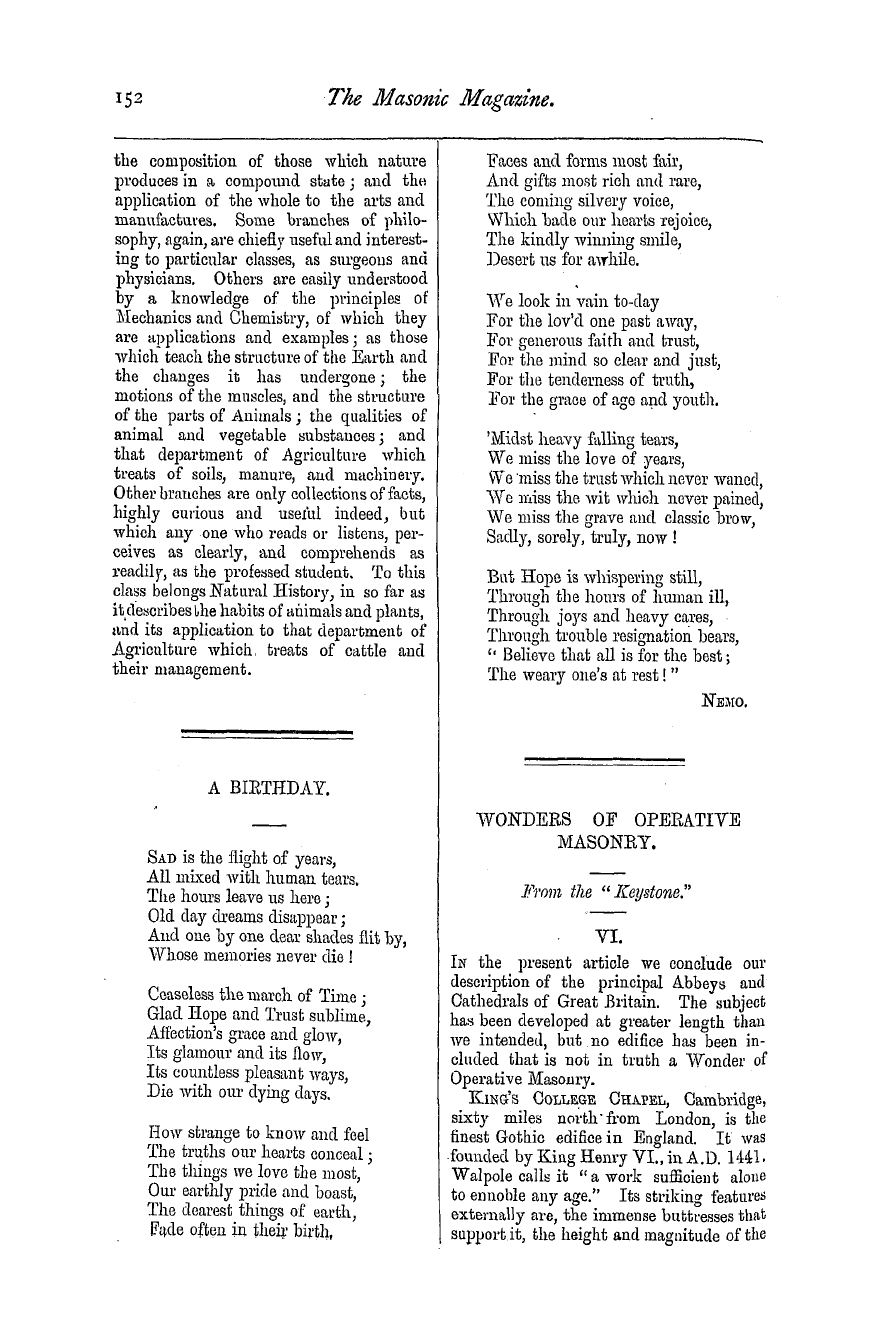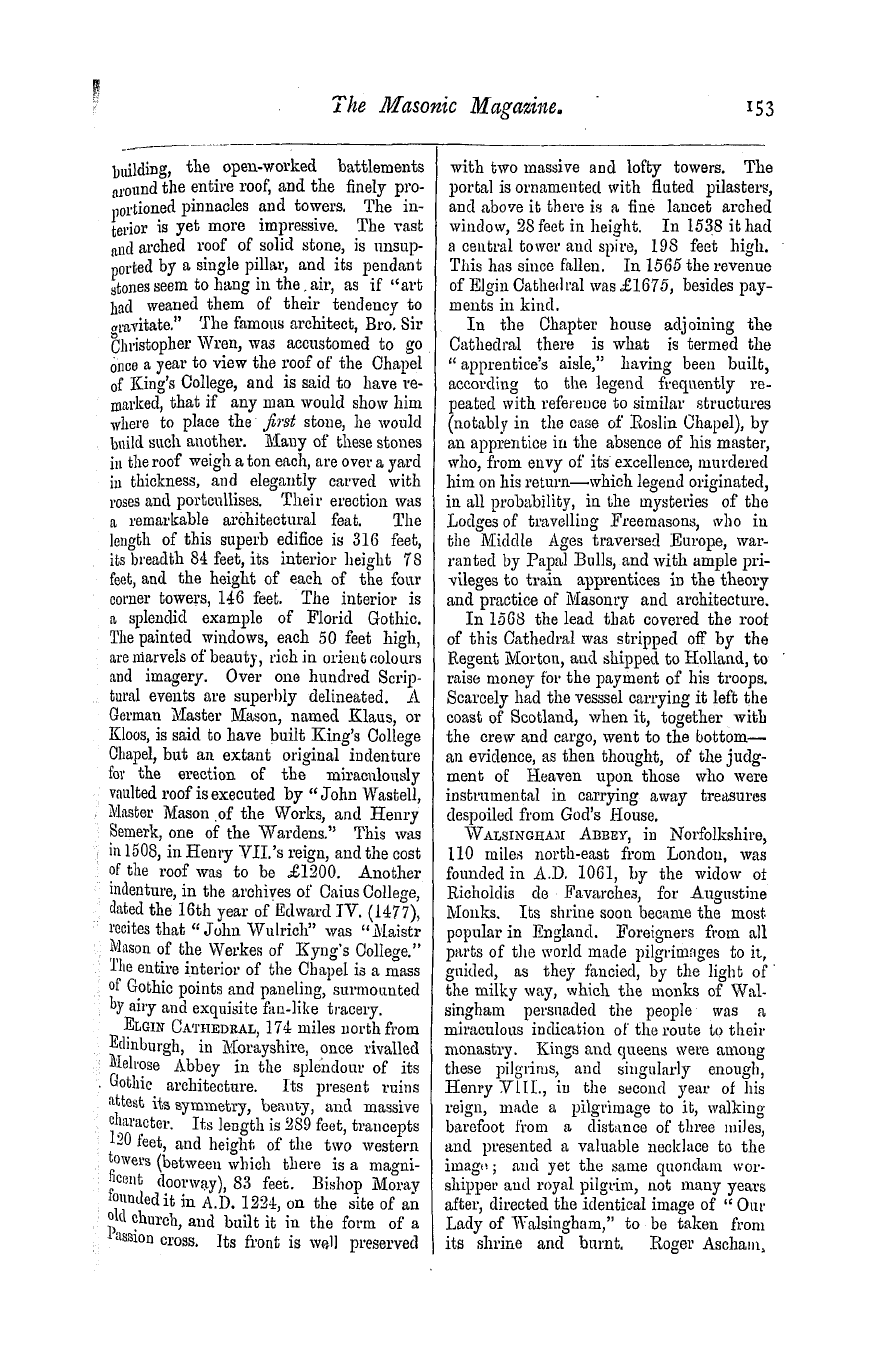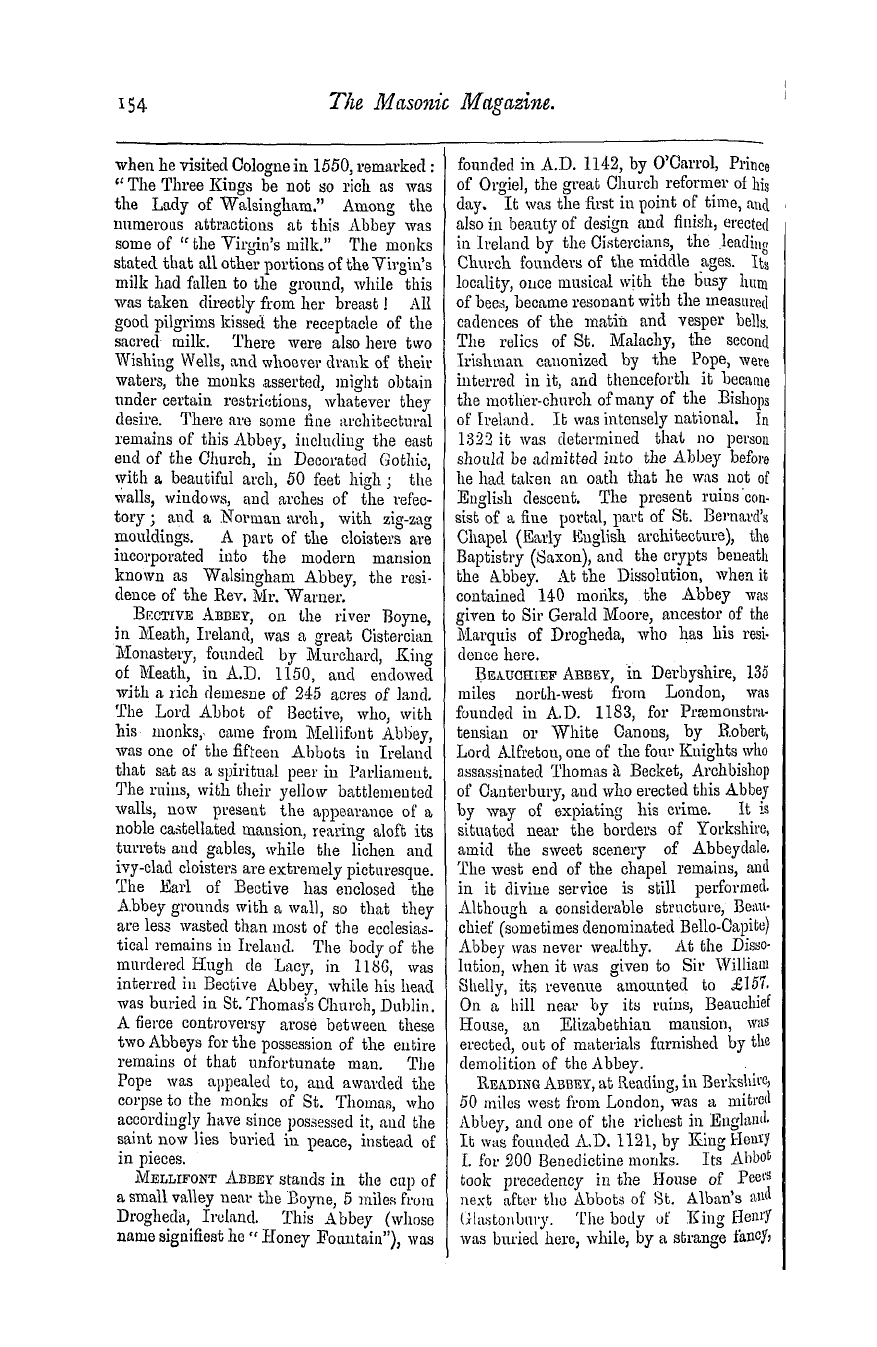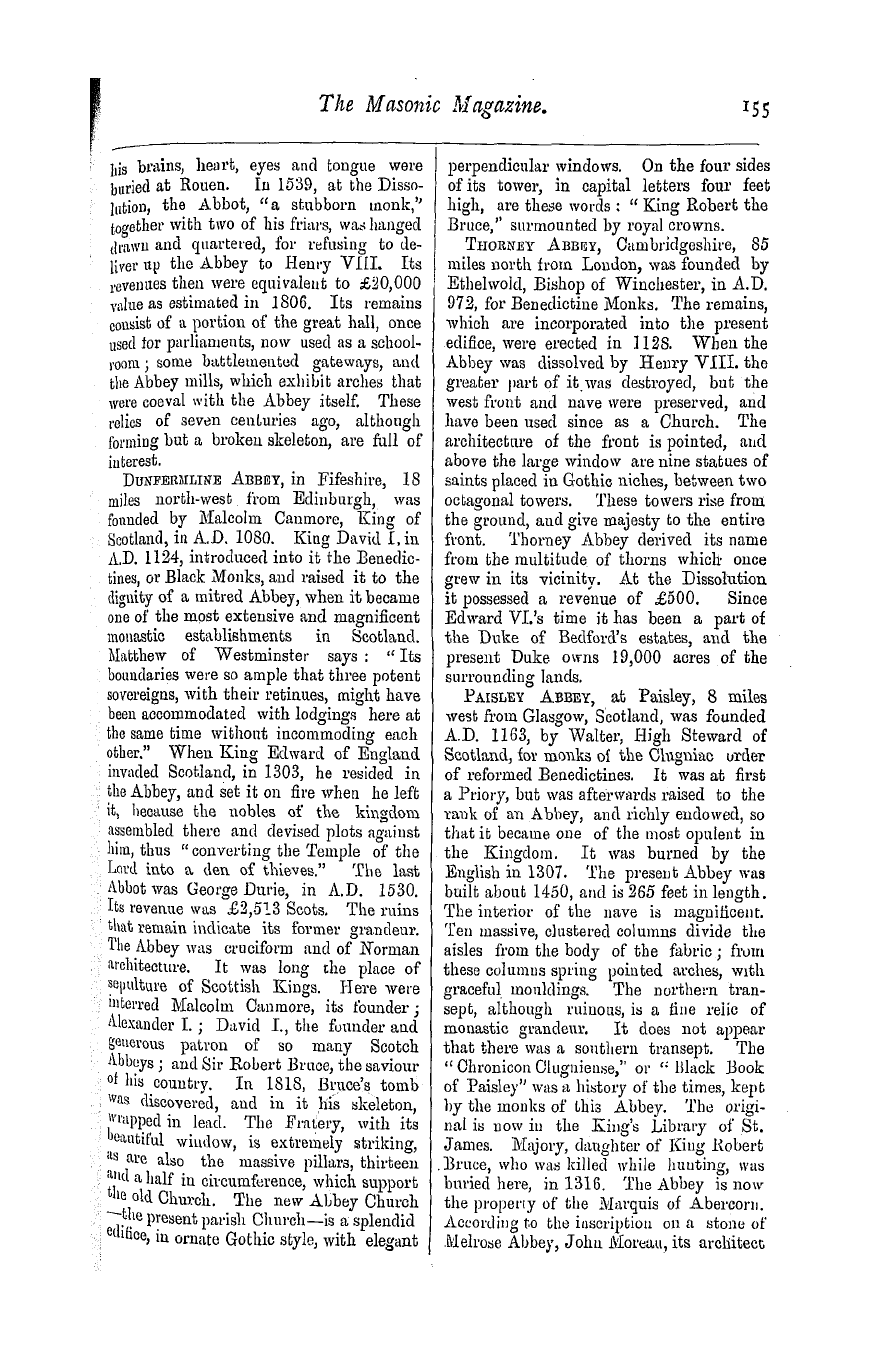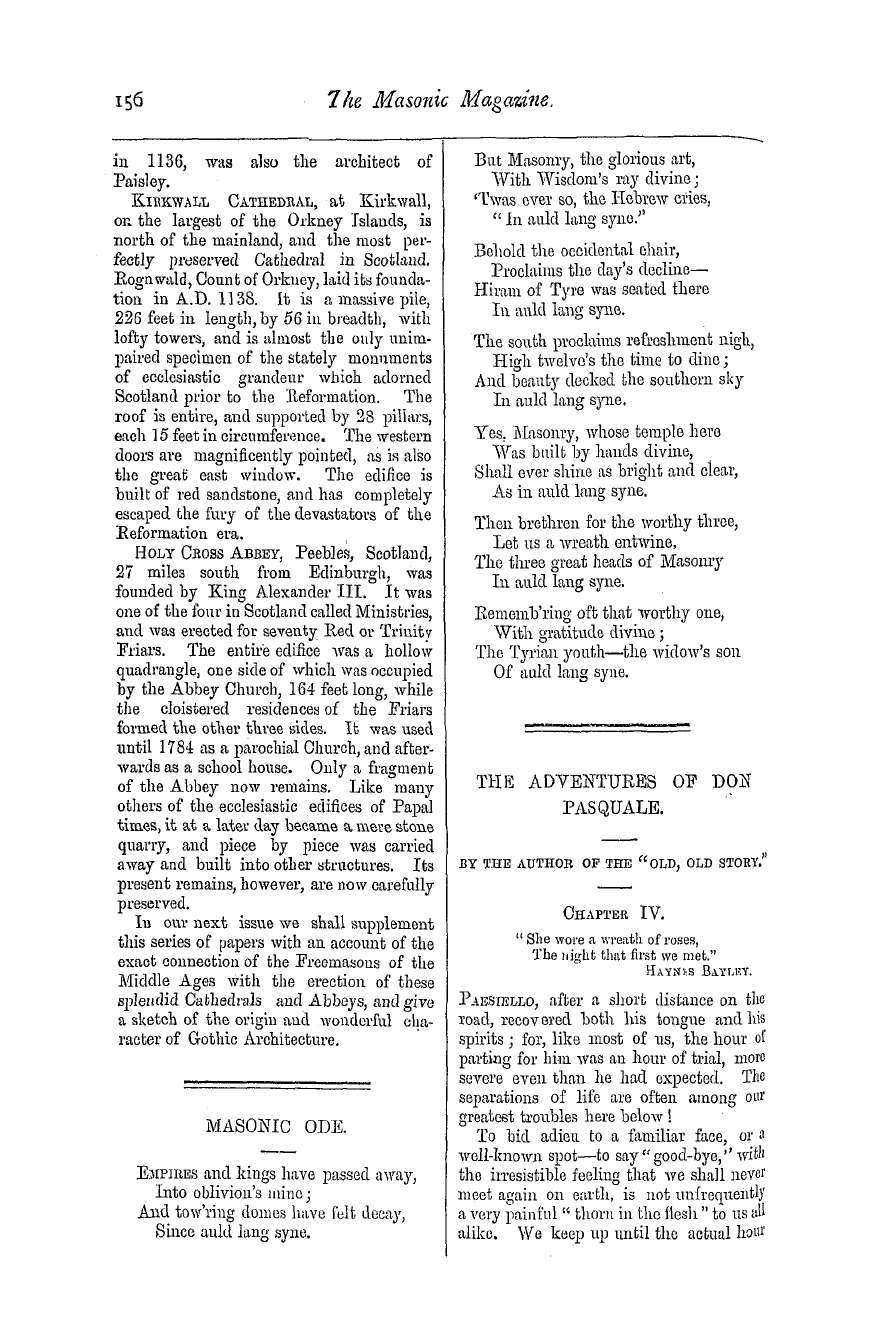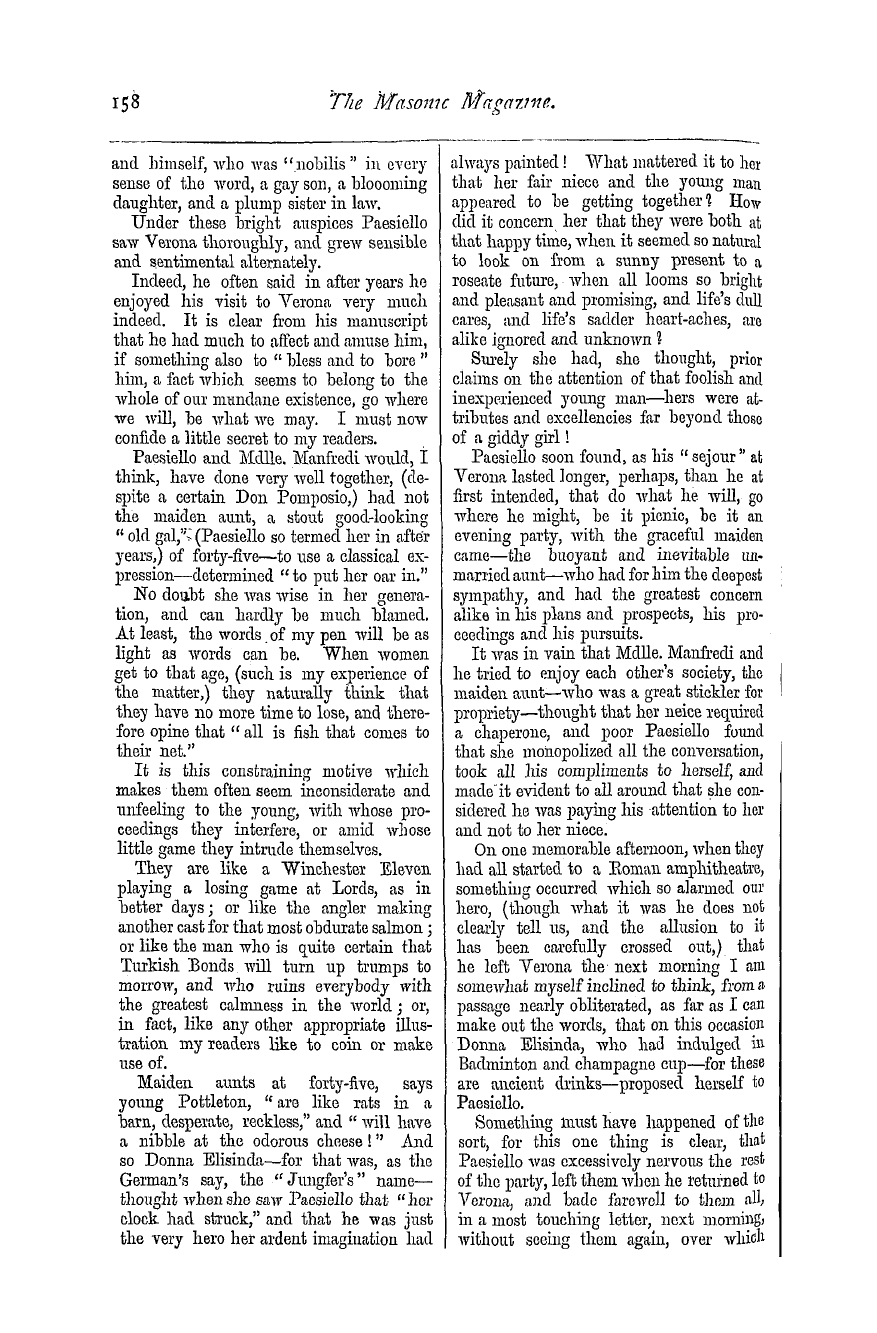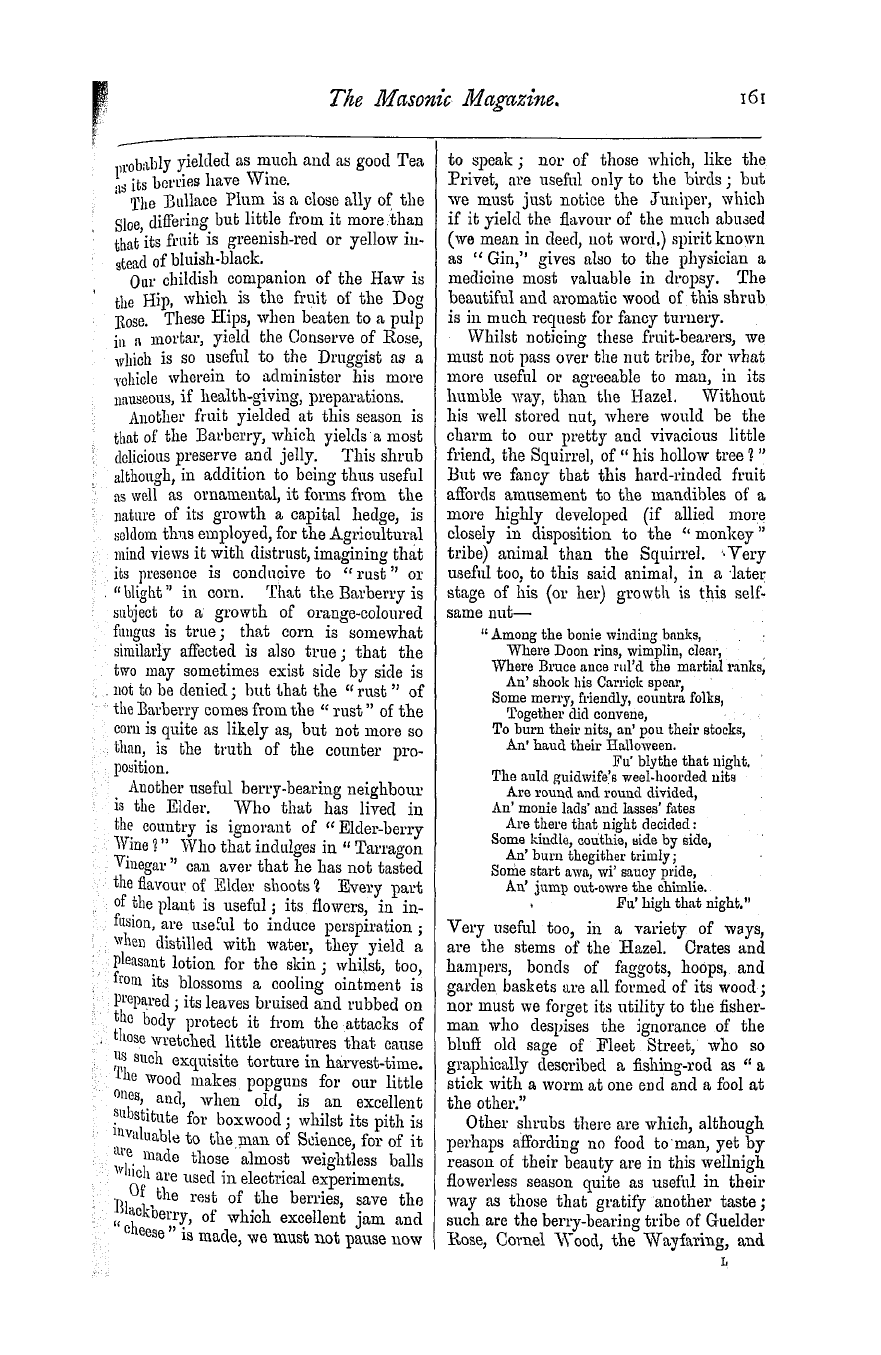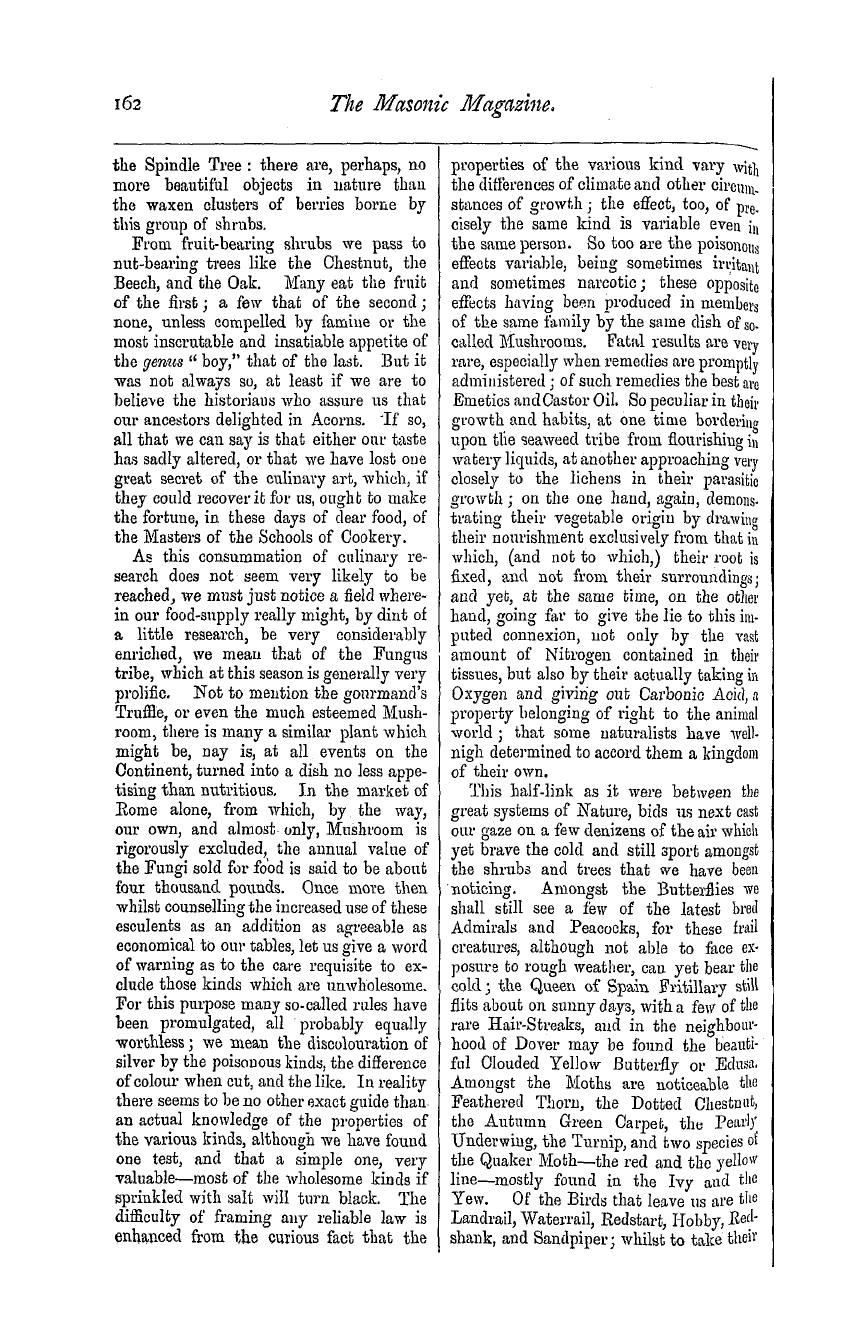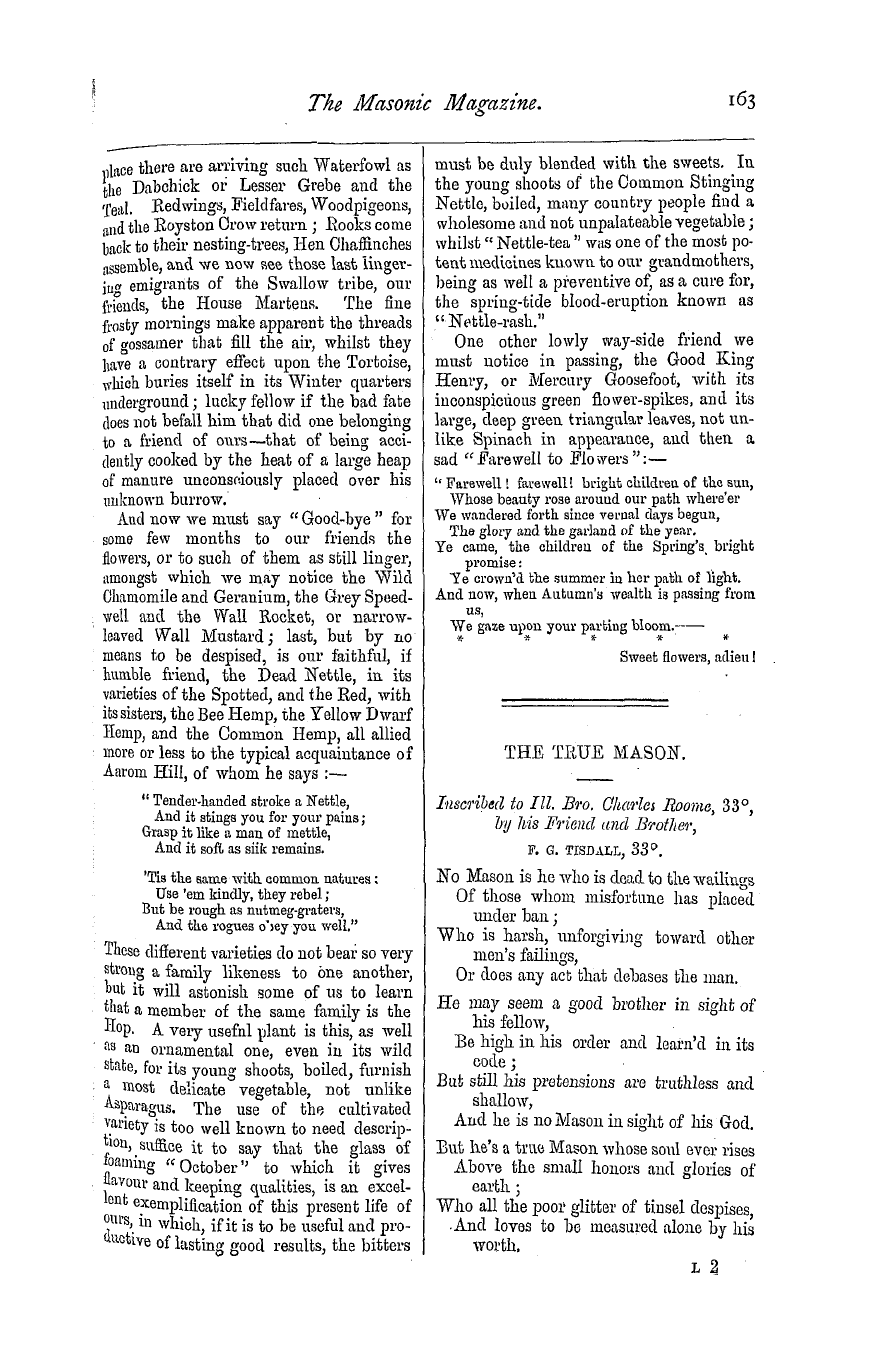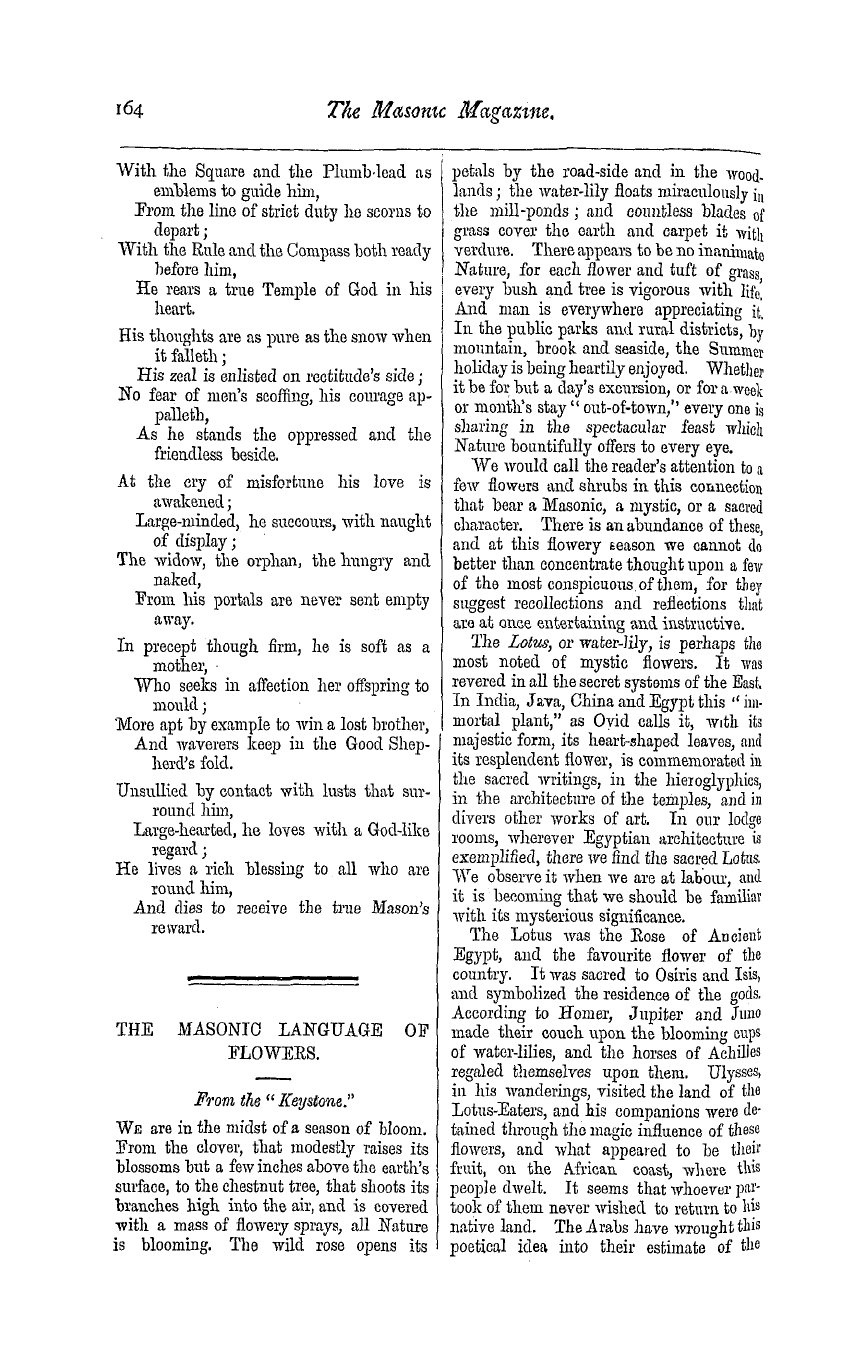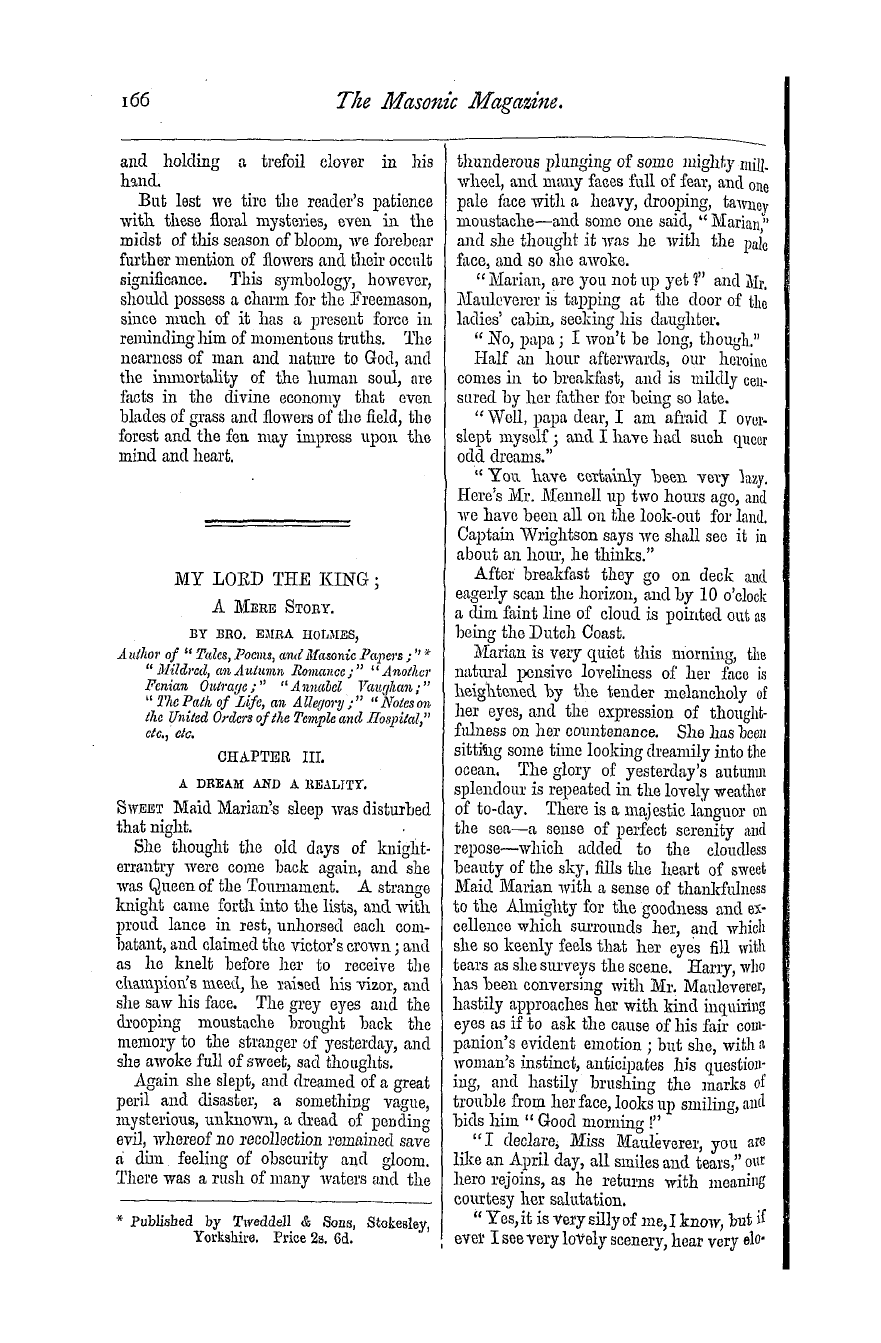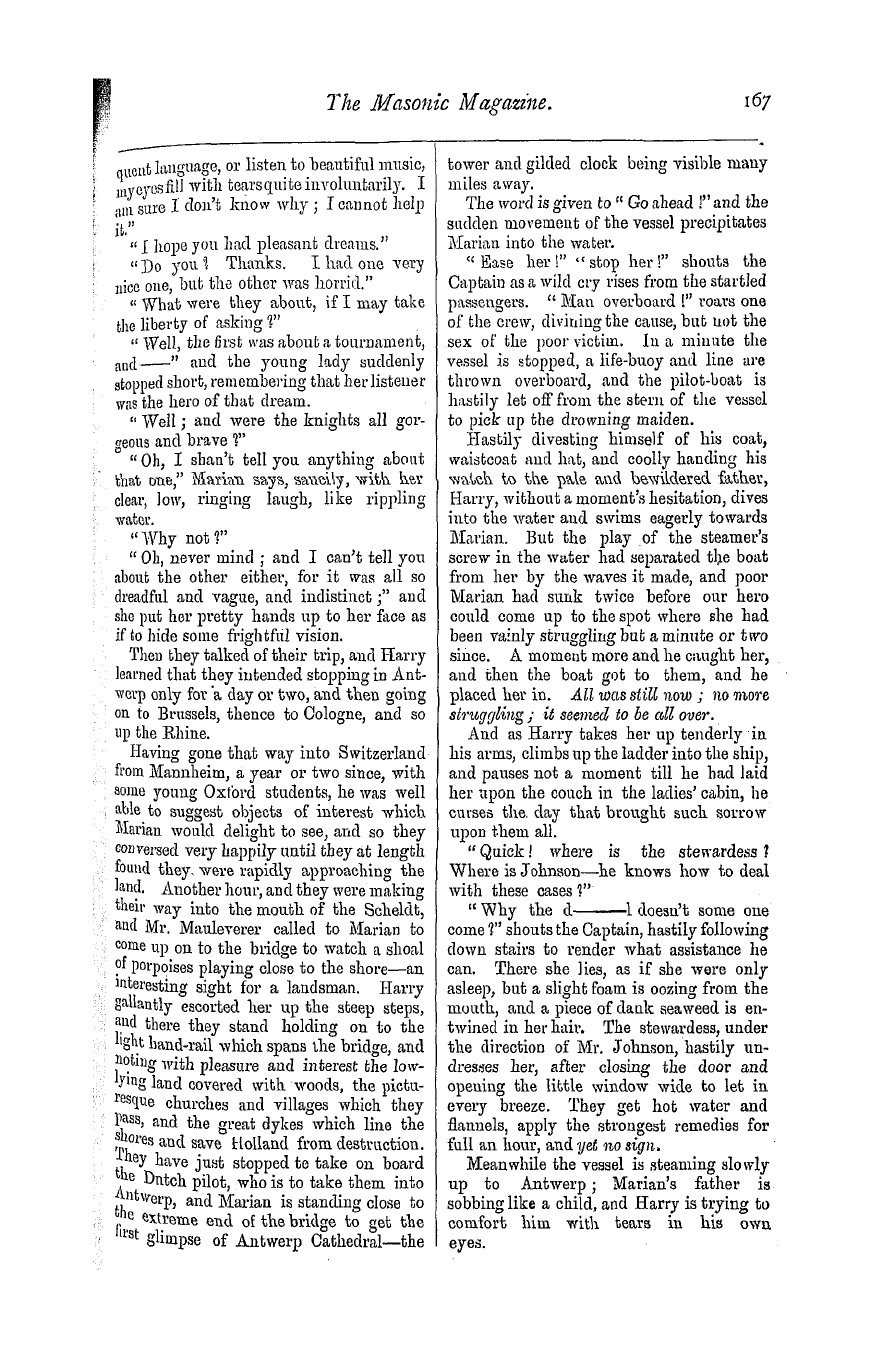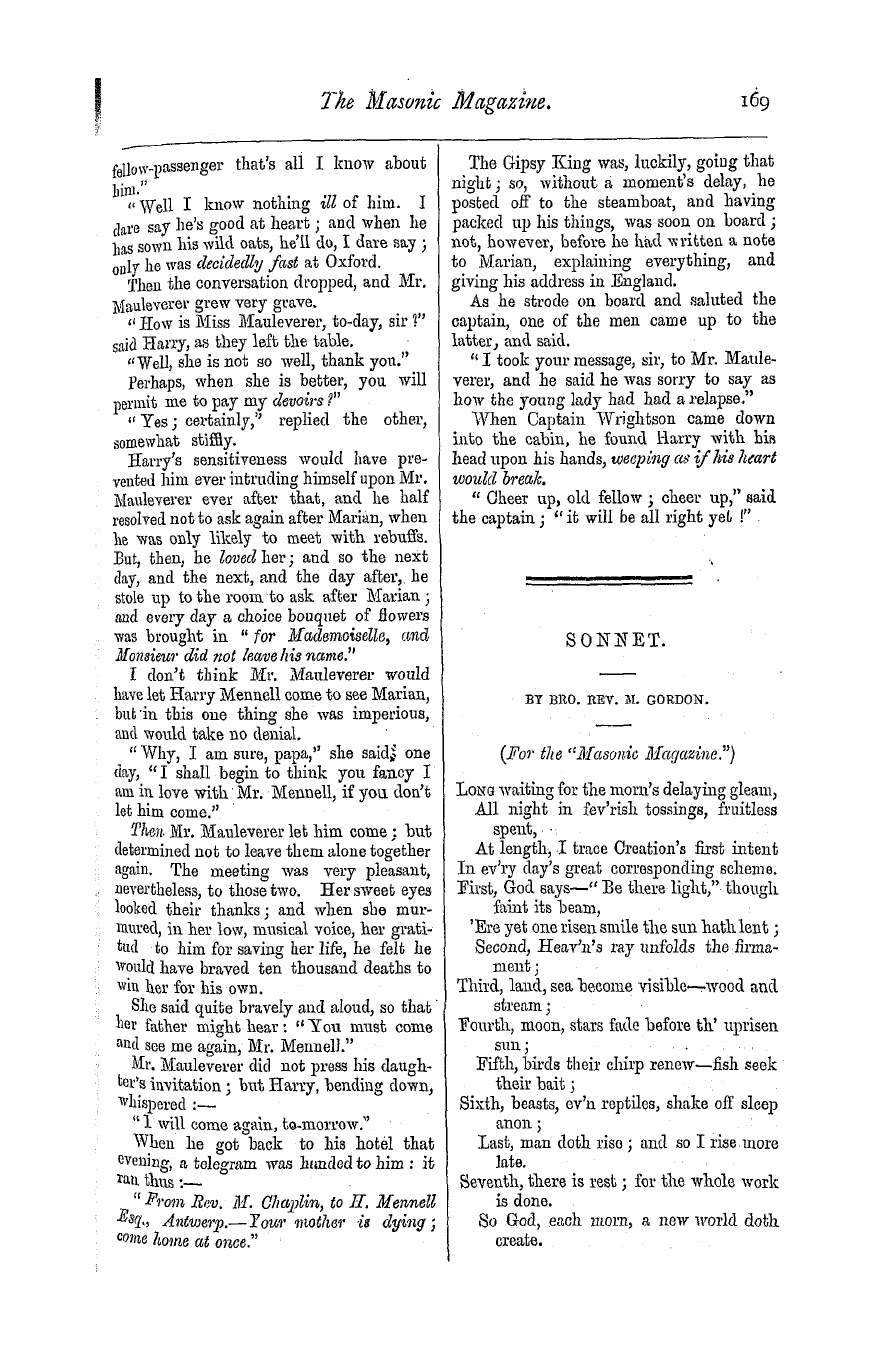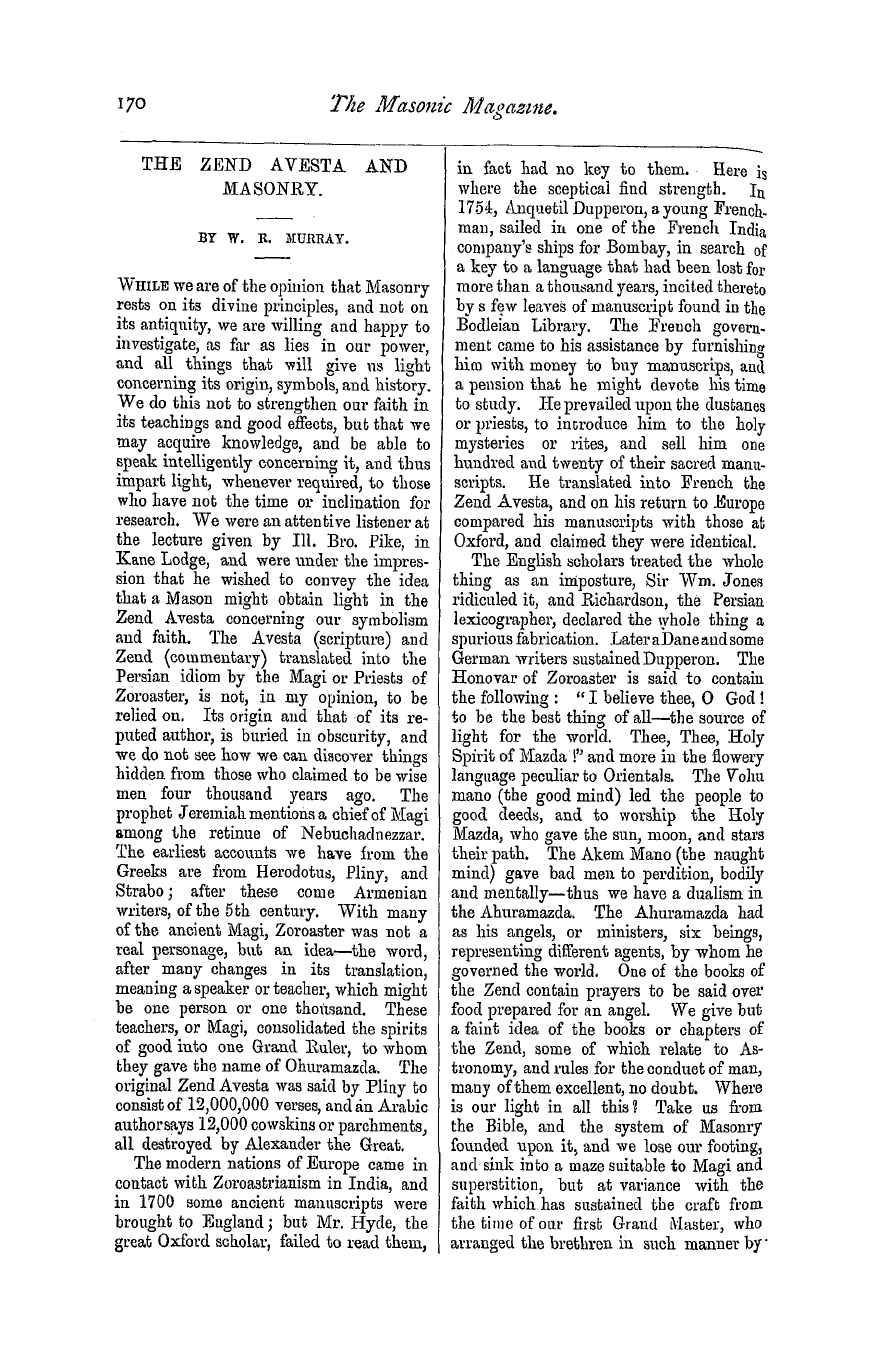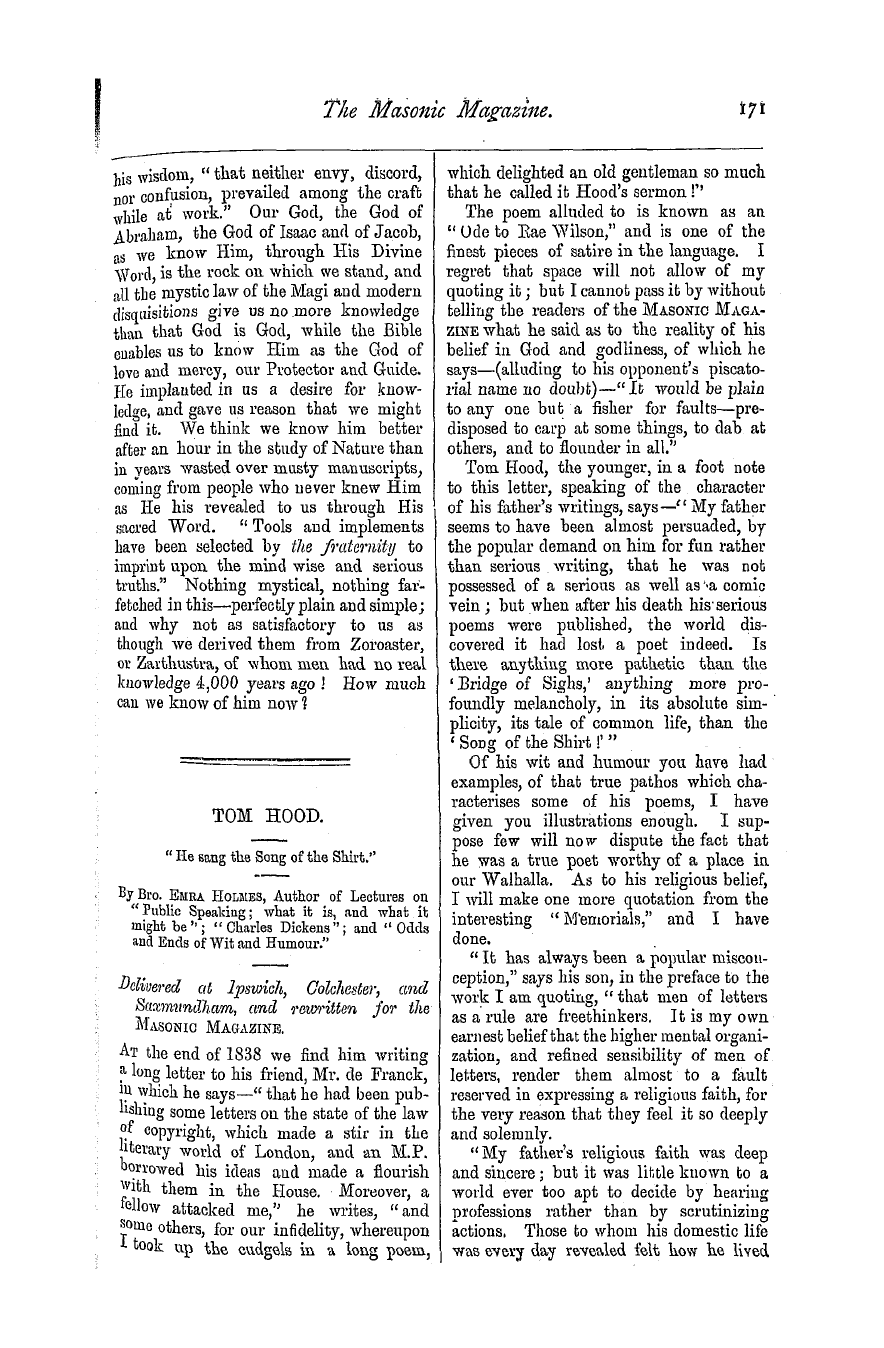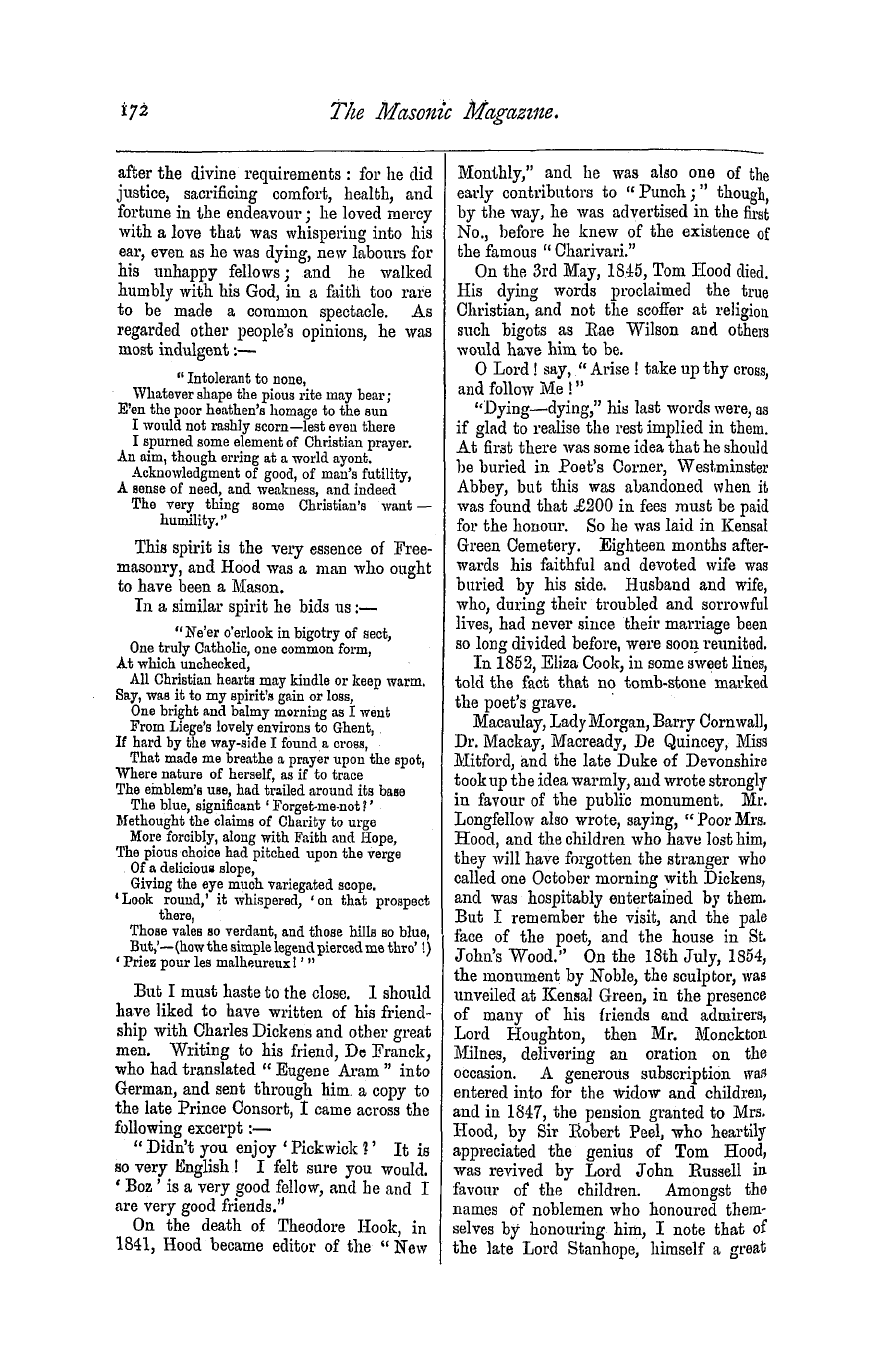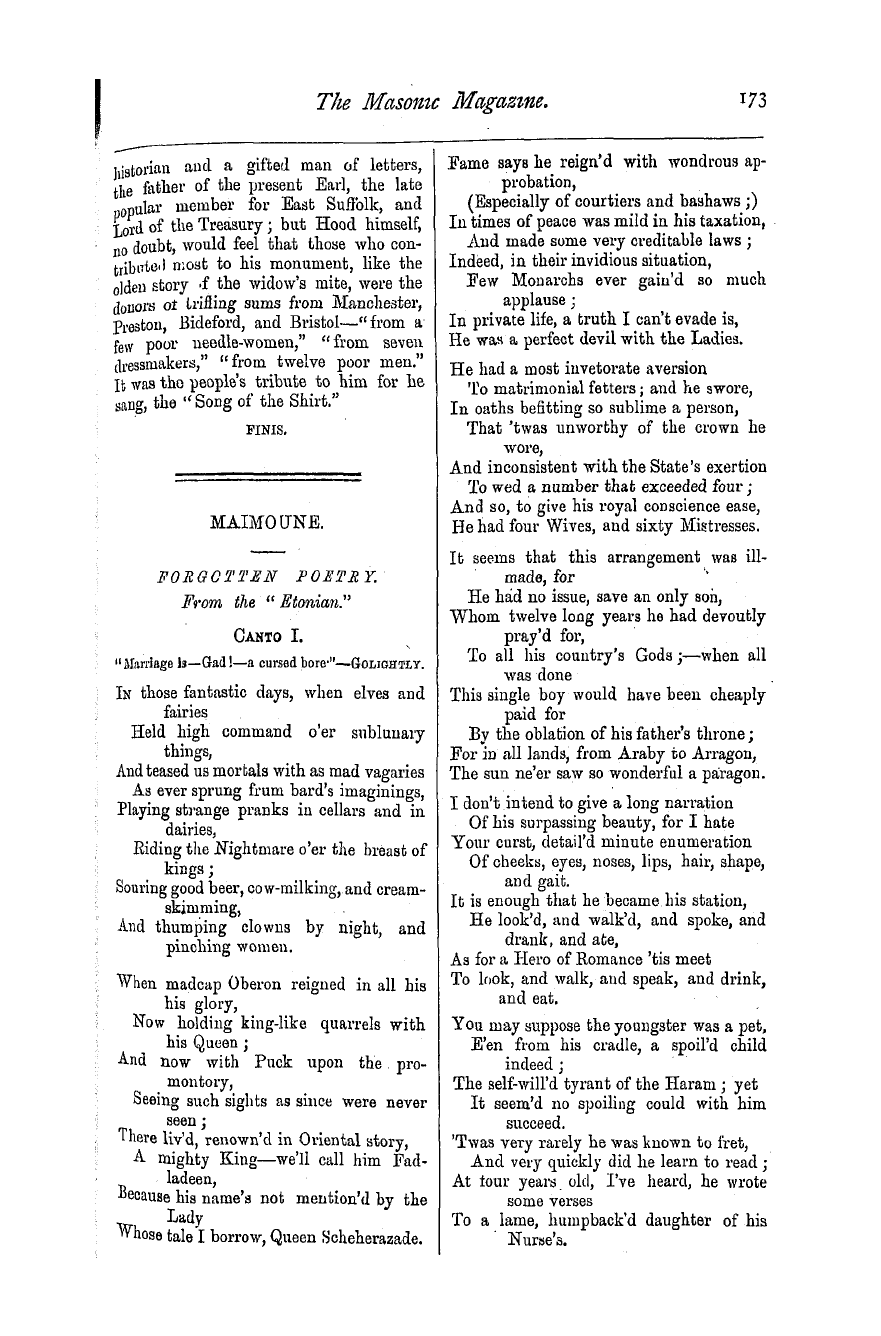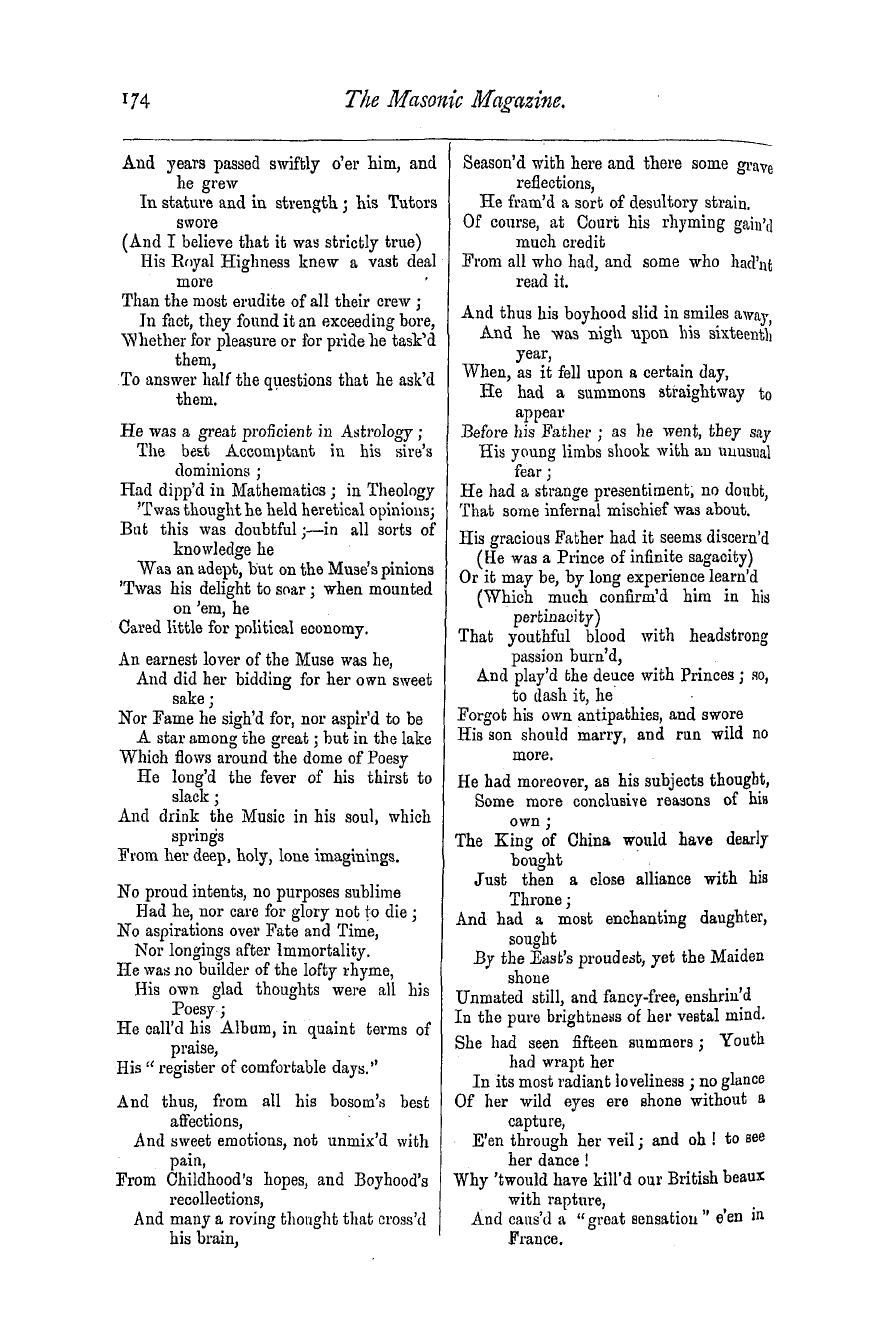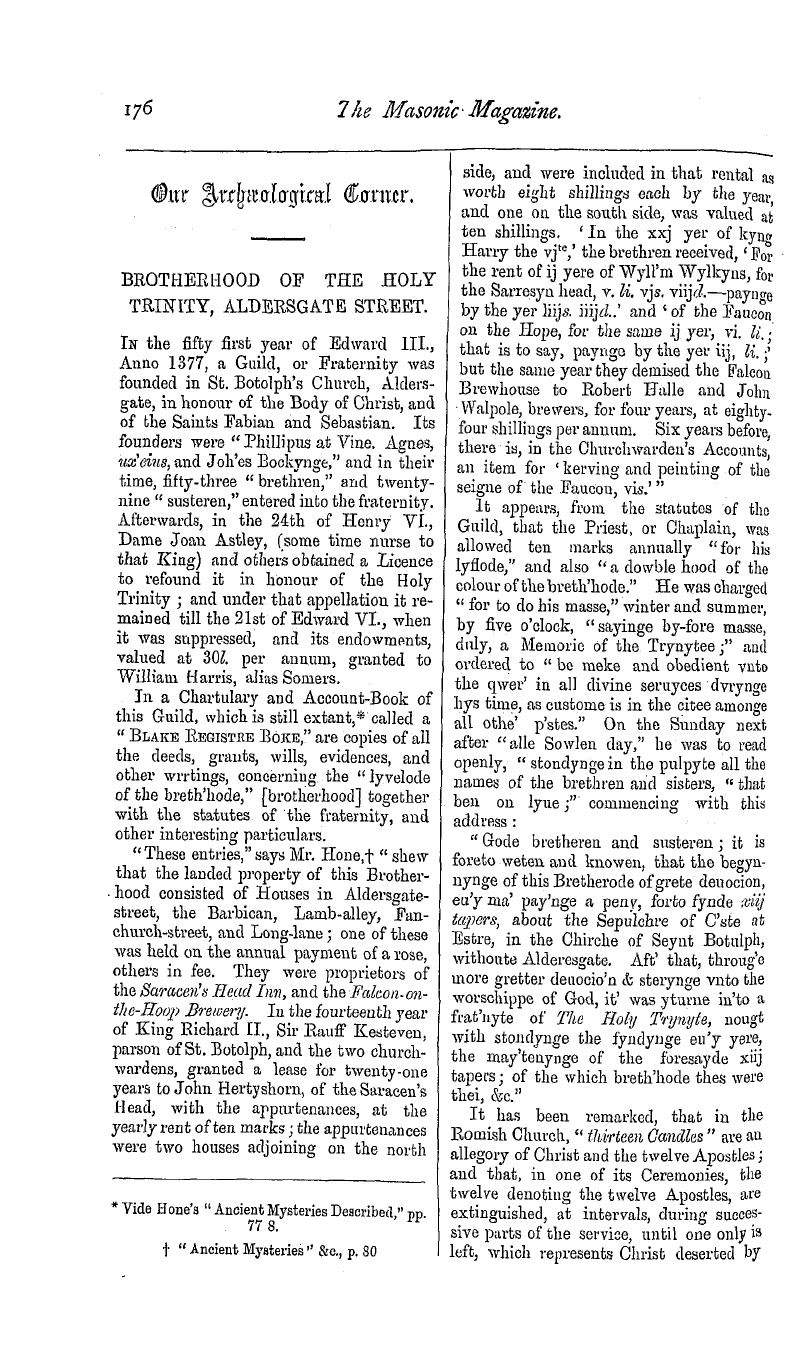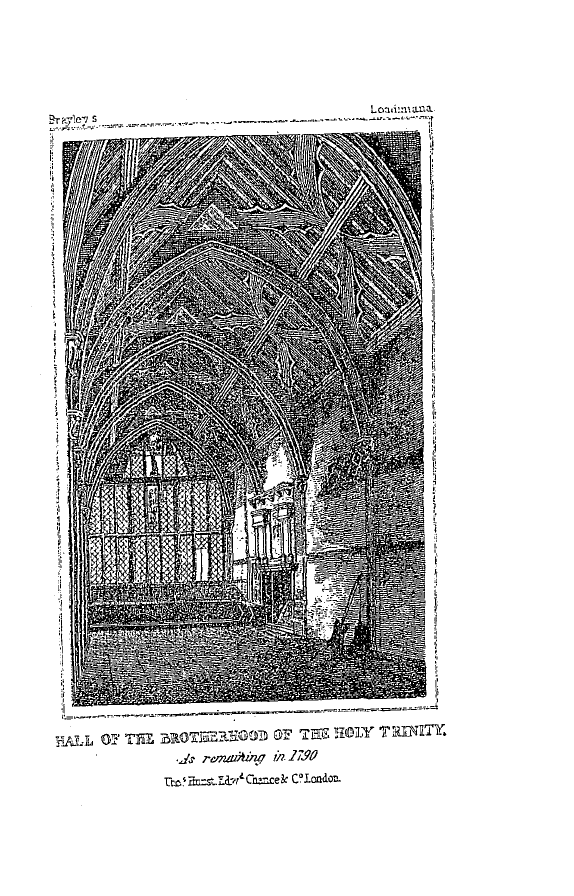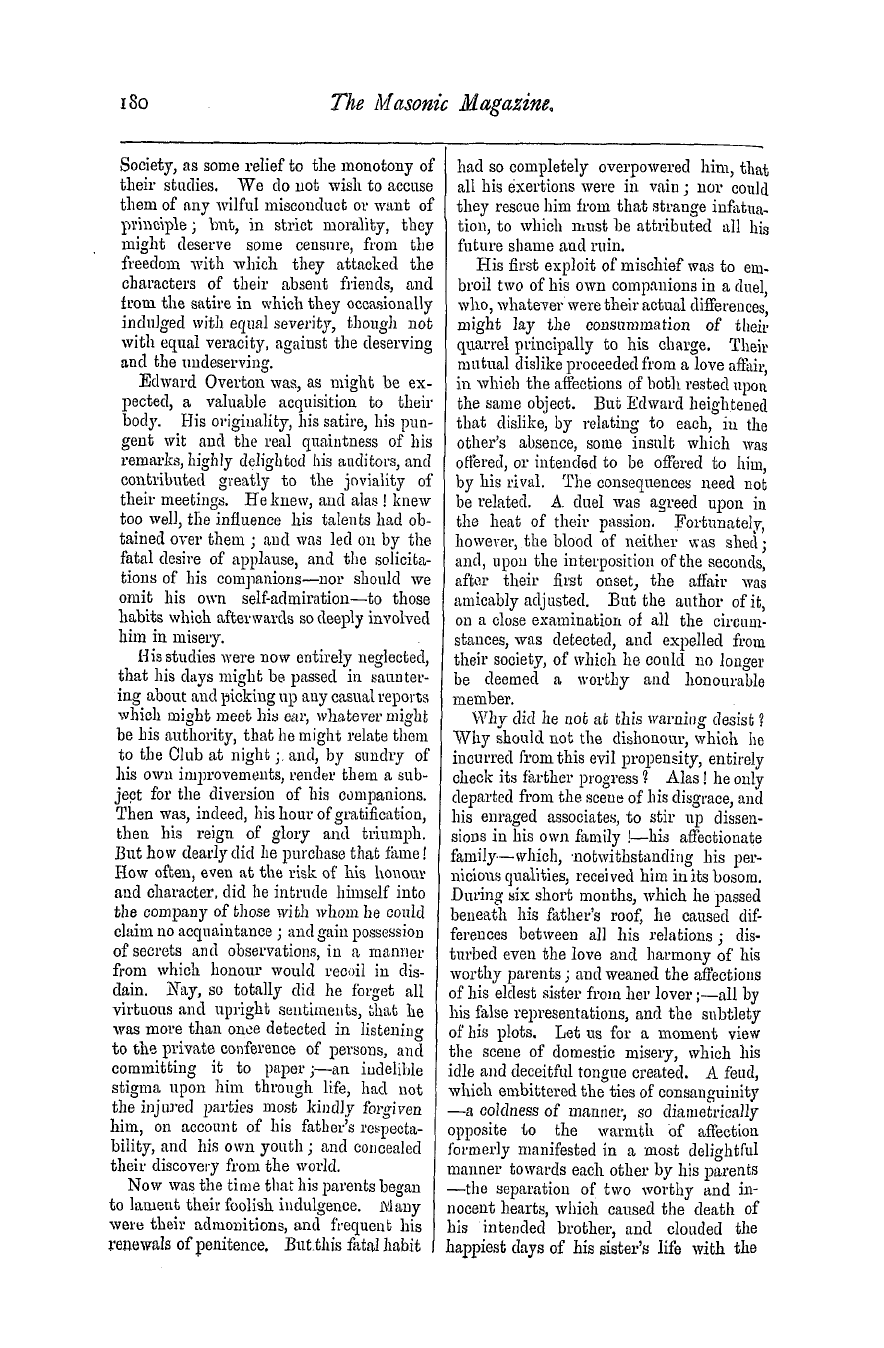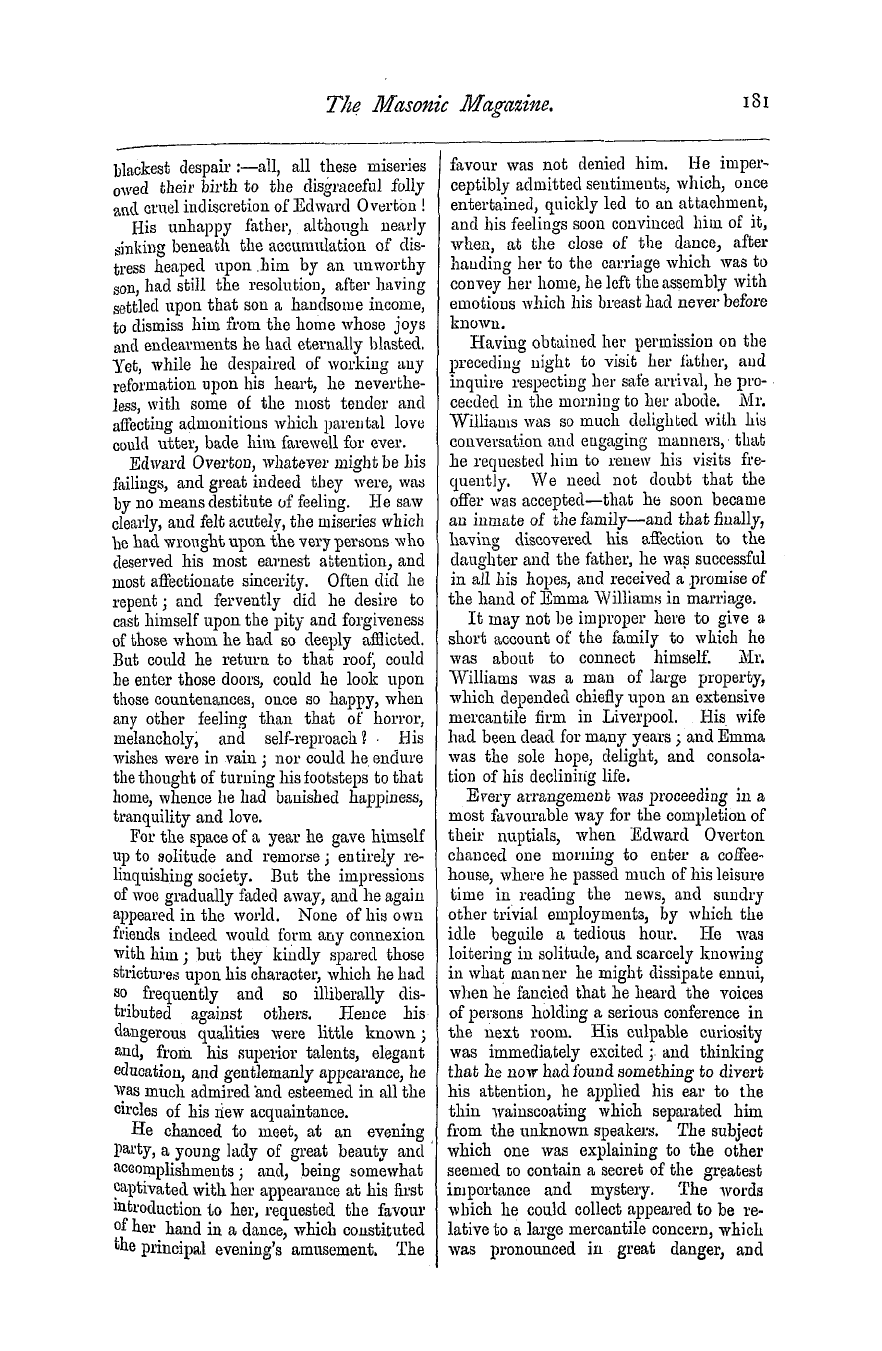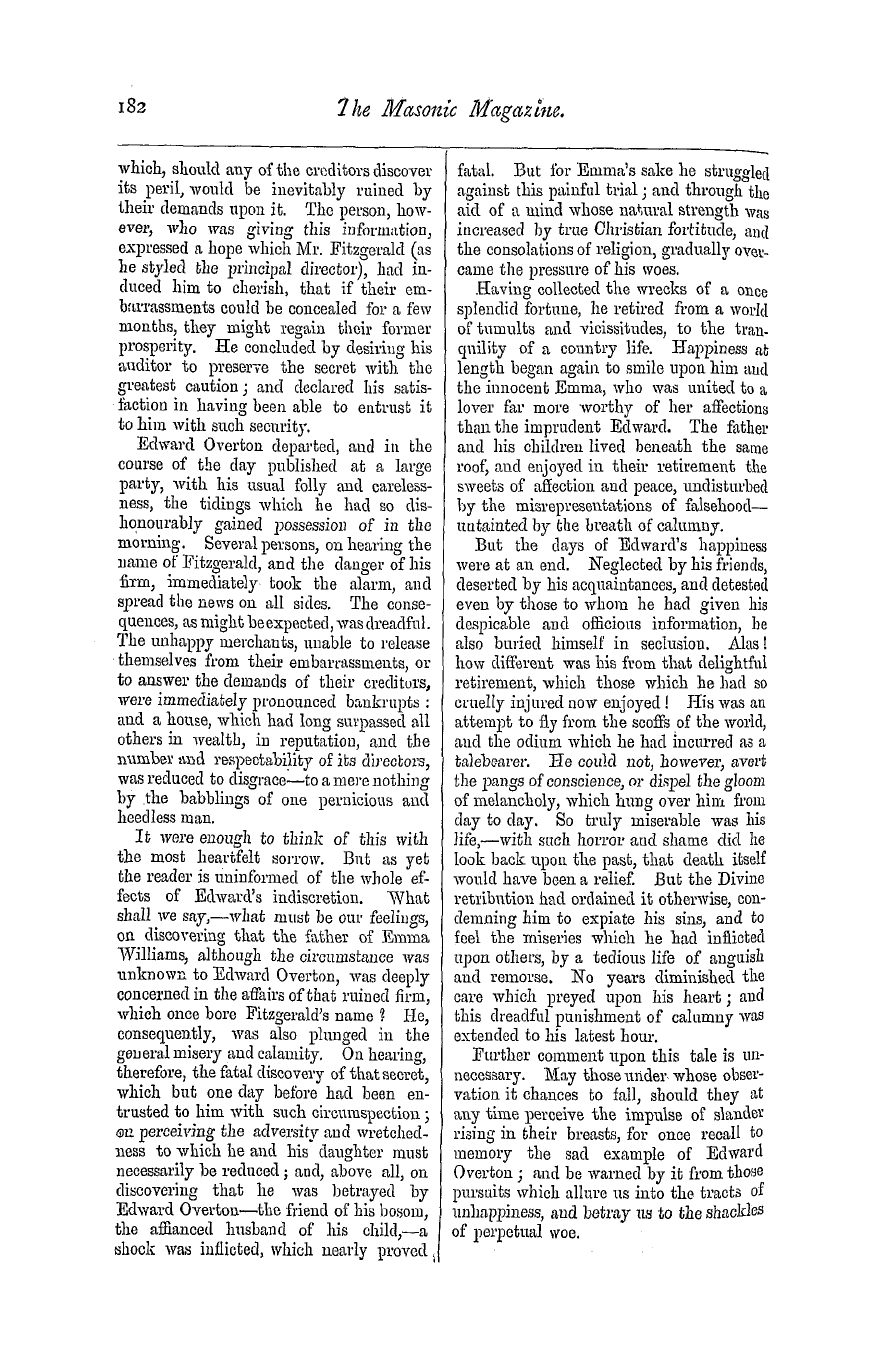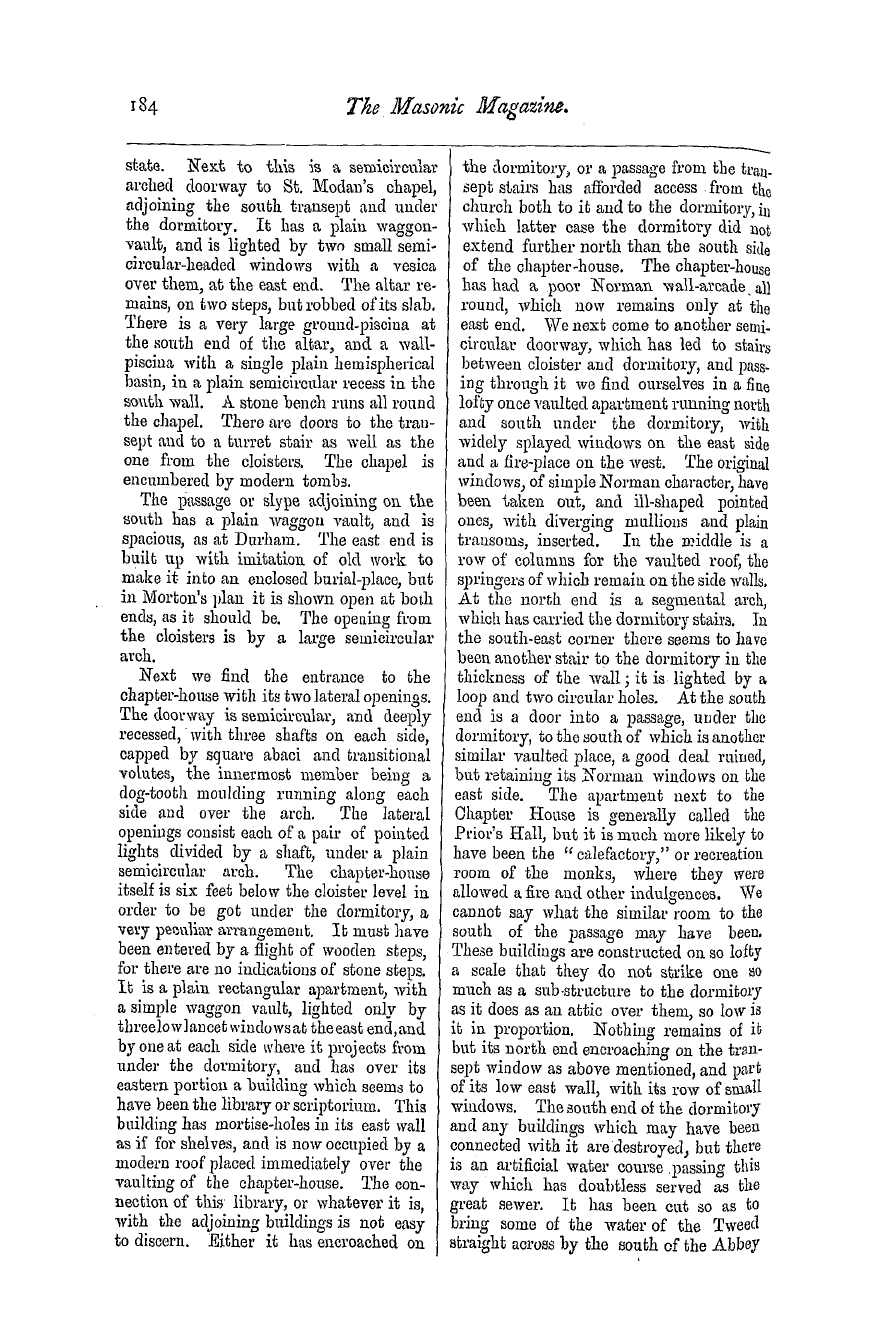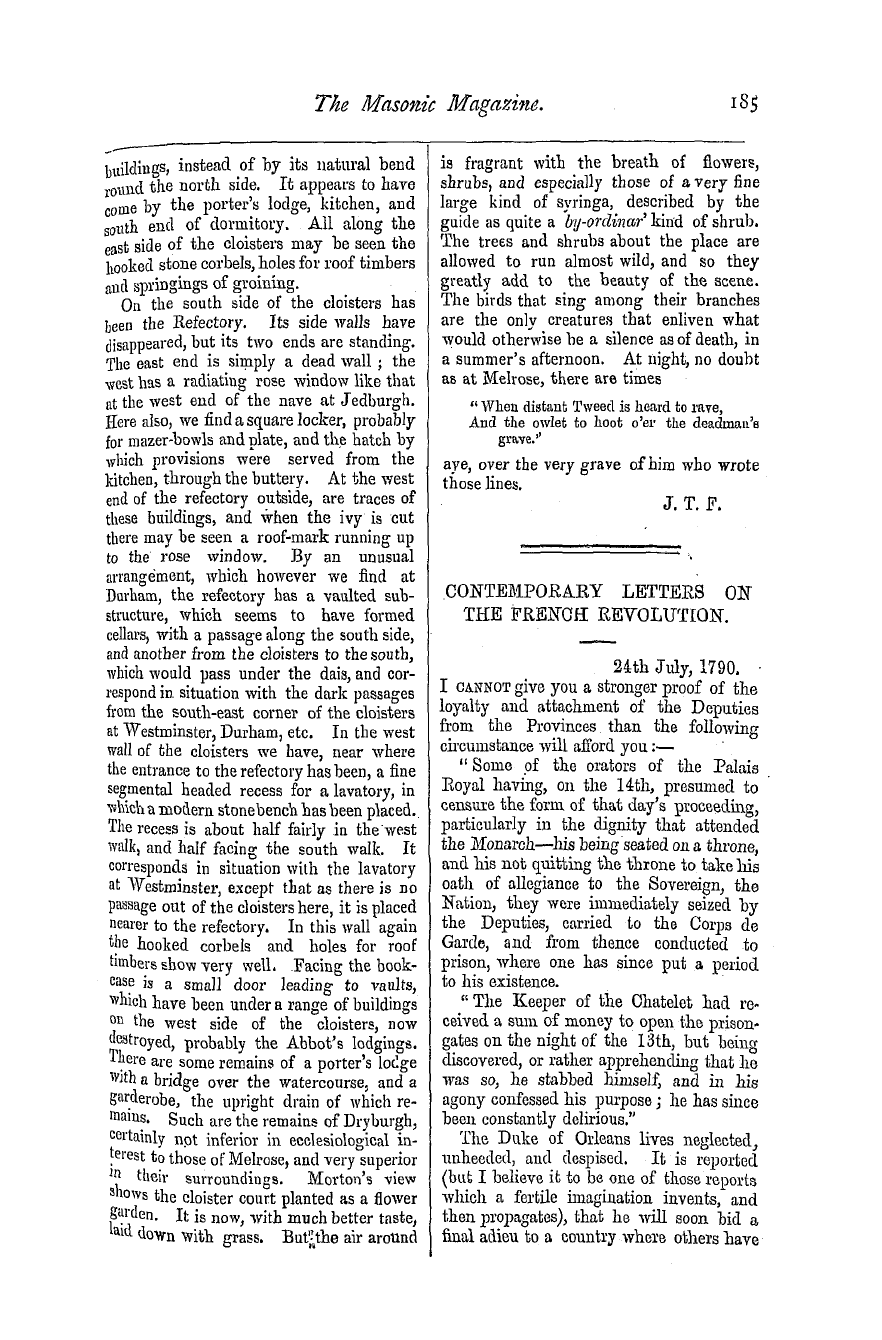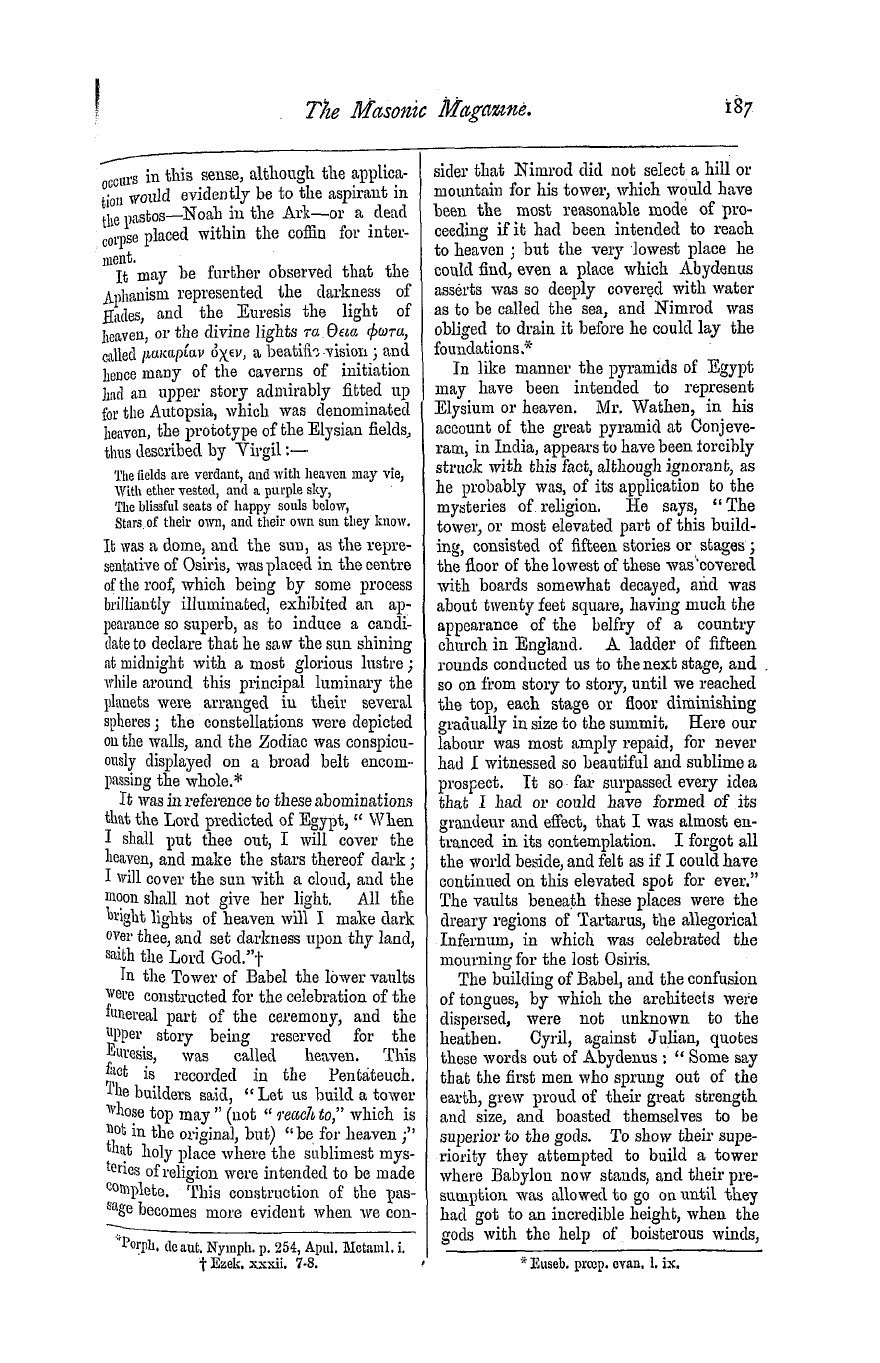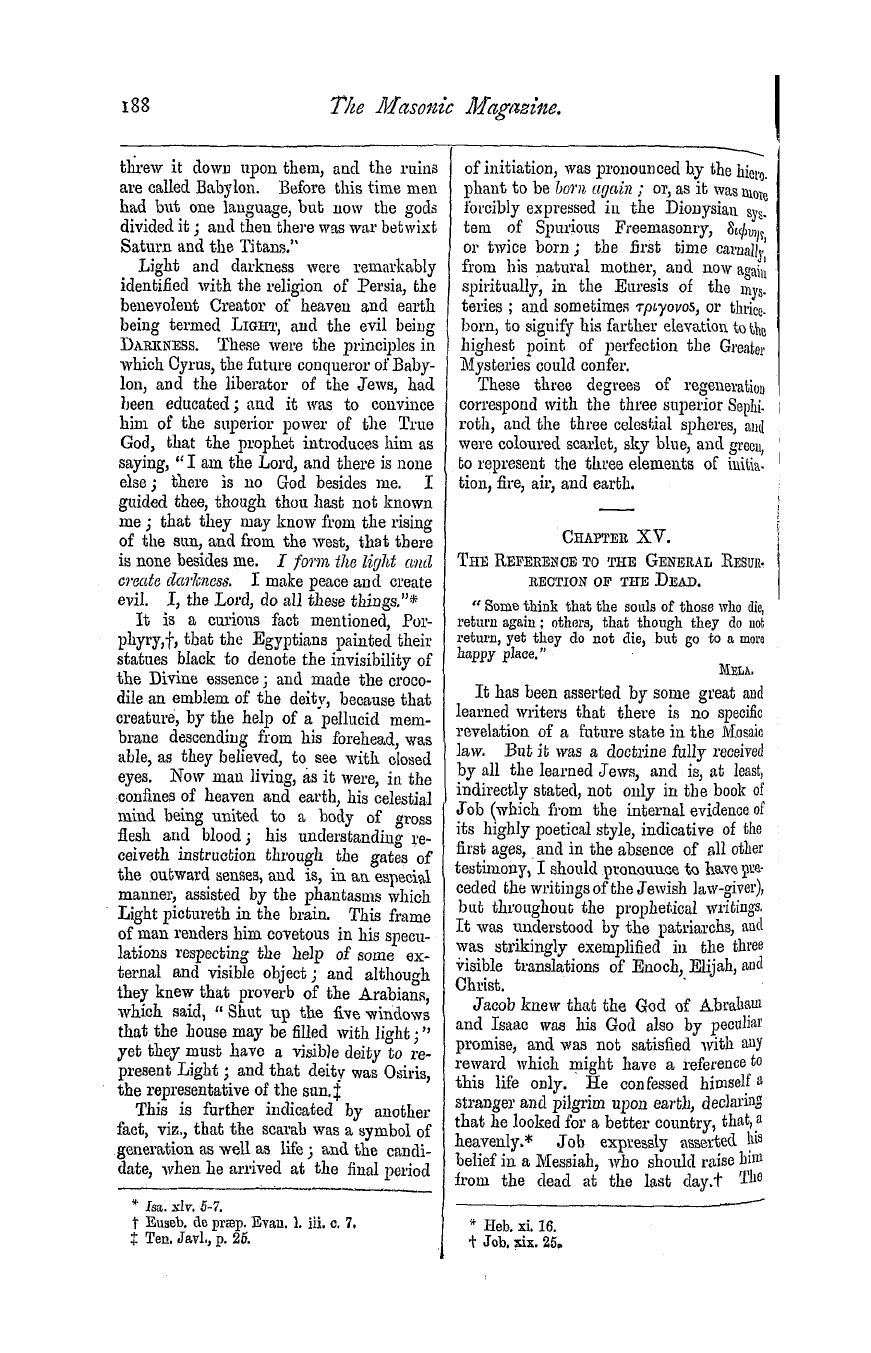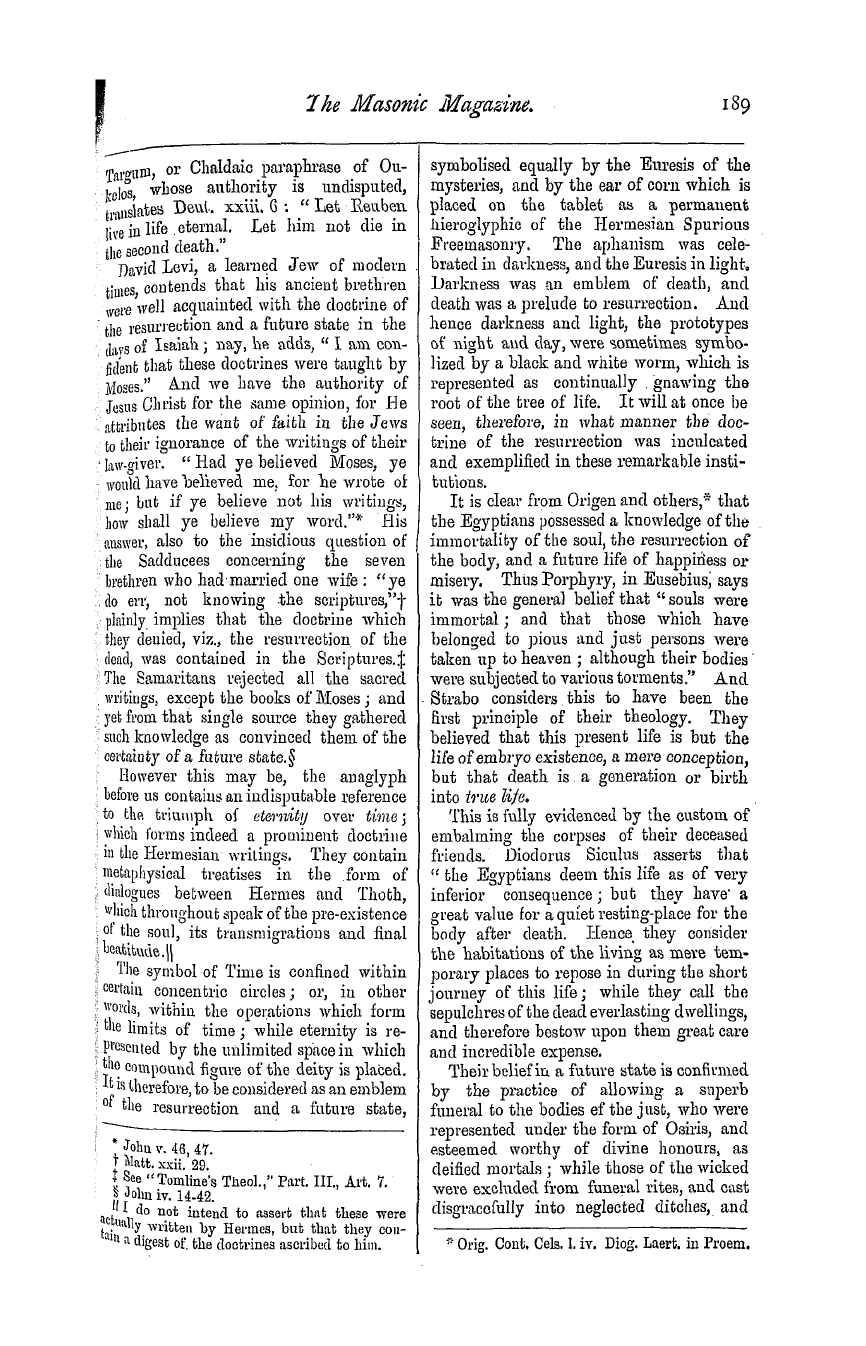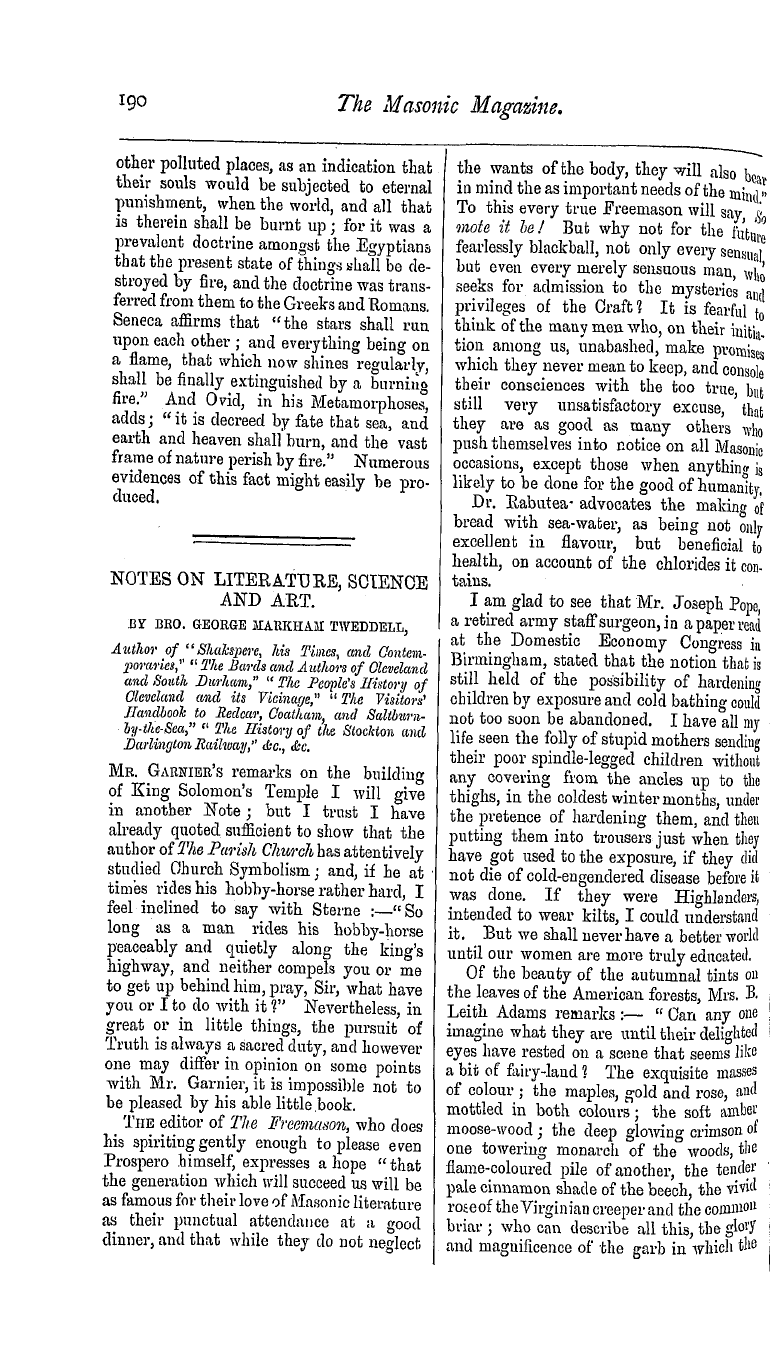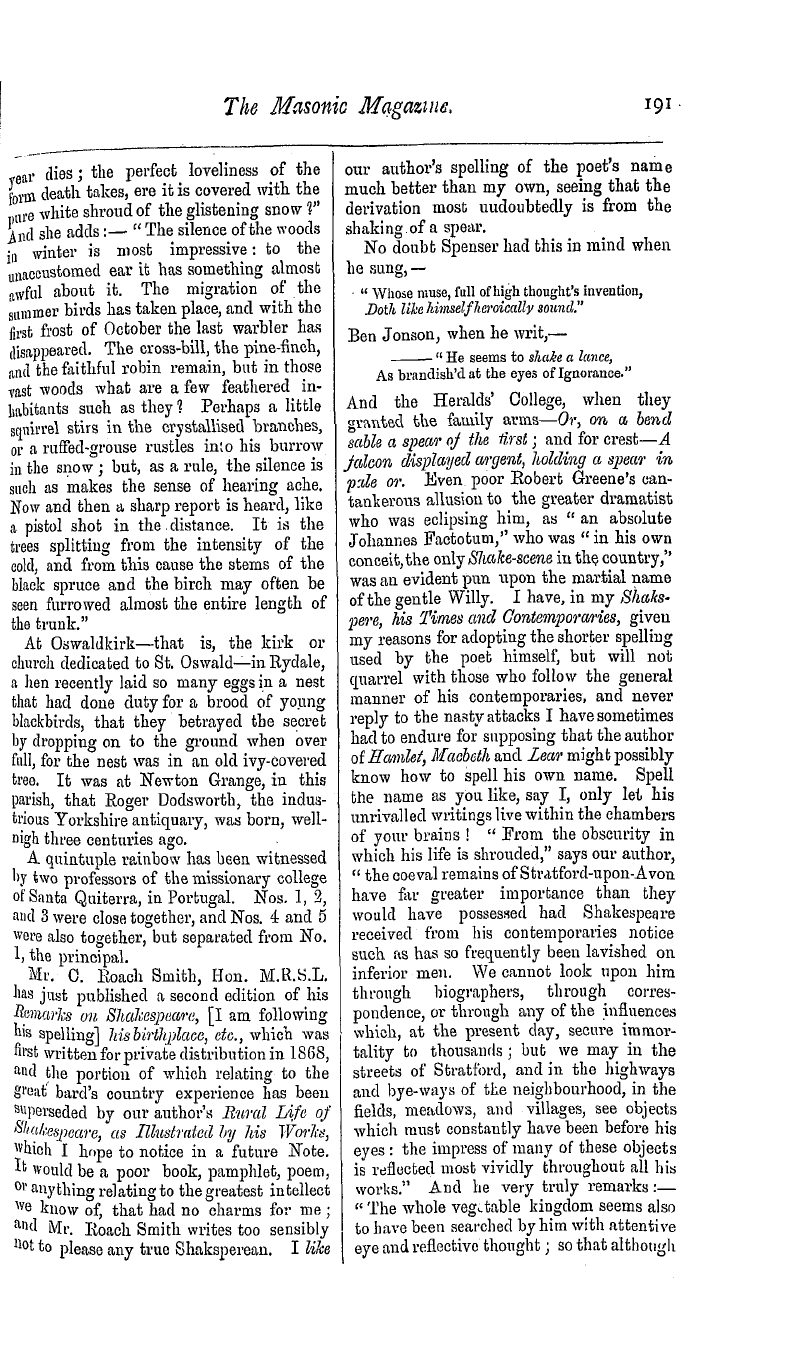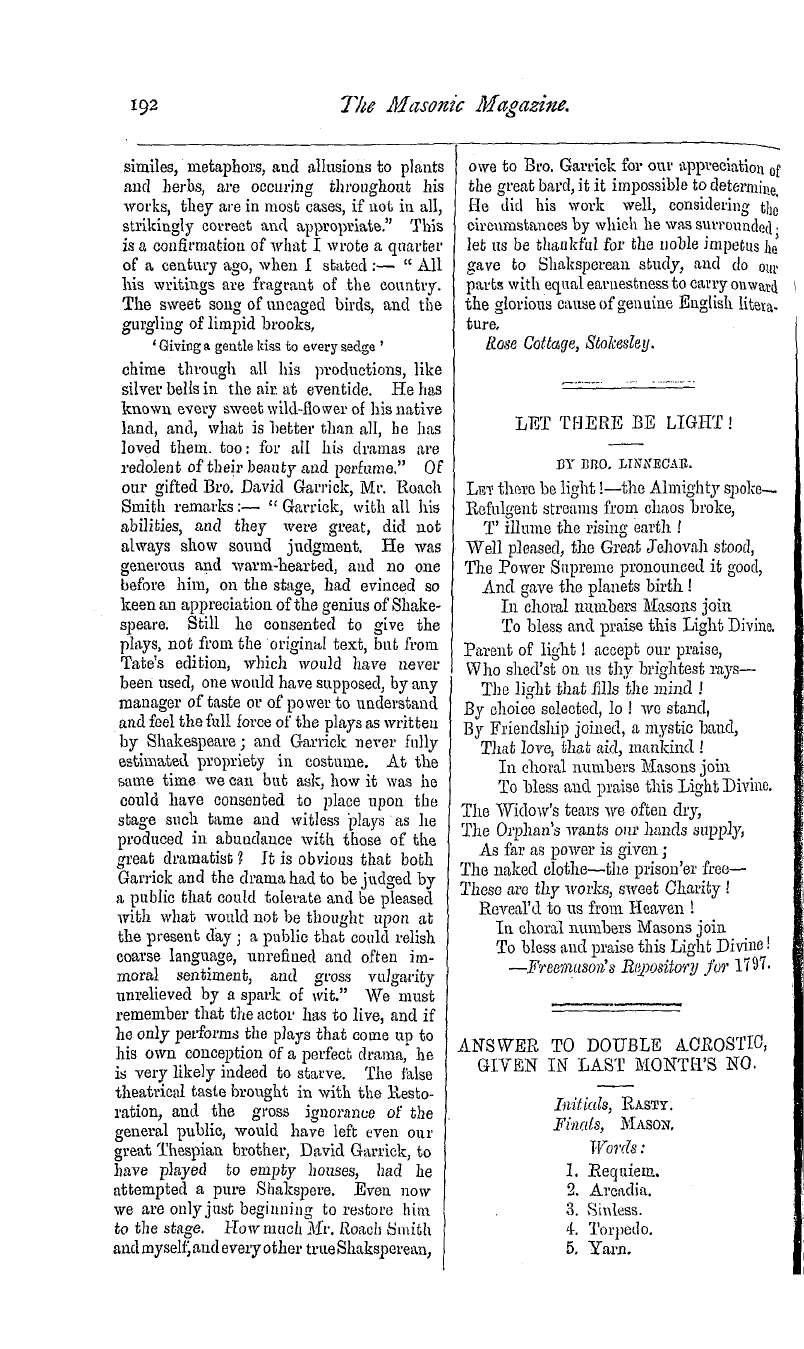-
Articles/Ads
Article Architectural Jottings. ← Page 3 of 3 Article Architectural Jottings. Page 3 of 3 Article CONTEMPORARY LETTERS ON THE FRENCH REVOLUTION. Page 1 of 2 →
Note: This text has been automatically extracted via Optical Character Recognition (OCR) software.
Architectural Jottings.
buildings , instead of by its natural bend round the north side . It appears to have come by the porter ' s lodge , kitchen , and south end of dormitory . All along the east side of the cloisters may be seen the hooked stone corbels , holes for roof timbers and springings of groining . On the south side of the cloisters has
been the Refectory . Its side walls have disappeared , but its two ends are standing . The east end is simply a dead wall ; the west has a radiating rose window like that at the west end of the nave at Jedburgh . Here also , we find a square locker , probably for mazer-bowls and plateand the hatch by
, which provisions were served from the kitchen , through the buttery . At the west end of the refectory outside , are traces of these buildings , and when the ivy is cut there may be seen a roof-mark running up to the rose window . By an unusual
arrangement , which however we find at Darham , the refectory has a vaulted substructure , which seems to have formed cellars , with a passage along the south side , and another from the cloisters to the south , which would pass under the dais , and correspond in . situation with the dark passages from the south-east corner of the cloisters
at Westminster , Durham , etc . In the west wall of the cloisters we have , near where the entrance to the refectory has been , a fine segmental headed recess for a lavatory , in which a modern stonebench has been placed . The recess is about half fairly in the west walk , and half facing the south walk . It
corresponds in situation with the lavatory at Westminster , except that as there is no passage out of the cloisters here , it is placed nearer to the refectory . In this wall again the hooked corbels and holes for roof timbers show very well . Facing the bookcase is a small door leading to vaults
, which have been under a range of buildings 00 the west side of the cloisters , now destroyed , probably the Abbot's lodgings , there are some remains of a porter ' s lodge With a bridge over the watercourse , and a garderobe , the upright drain of which remains
. Such are the remains of Dryburgh , certainl y not inferior in ecclesiological interest to those of Melrose , and very superior Jn their surroundings . Morton ' s view lows 'he cloister court planted as a flower garden . It is now , with much better taste , « " ! down with grass . But' -the air aronnd
Architectural Jottings.
is fragrant with the breath of flowers , shrubs , and especially those of a very fine large kind of syringa , described by the guide as quite a by-ordinar' kind of shrub . The trees and shrubs about the place are allowed to run almost wild , and so they greatly add to the beauty of the scene .
The birds that sing among their branches are the only creatures that enliven what would otherwise be a silence as of death , in a summer's afternoon . At night , no doubt as at Melrose , there are times " When distant Tweed is beard to rave
, And the owlet to hoot o'er the deadmau'a grave . '' aye , over the very grave of him who wrote those lines . J . T . F .
Contemporary Letters On The French Revolution.
CONTEMPORARY LETTERS ON THE FRENCH REVOLUTION .
24 th July , 1790 . I CANNOT give you a stronger proof of the loyalty and attachment of the Deputies from the Provinces than the following circumstance will afford you : — "Some of the orators of the Palais
Royal having , on the 14 th , presumed to censure the form of that day ' s proceeding , particularly in the dignity that attended the Monarch—his being seated on a throne , and his not quitting the throne to take Ms oath of allegiance to the Sovereign , the Nation , they were immediately seized b y the Deputies , carried to the Corps de
Oarde , and irom tnence conducted to prison , where one has since put a period to his existence . "The Keeper of the Chatelet had received a sum of money to open the prisongates on the night of the 13 th , but being discovered , or rather apprehending that ho
was so , he stabbed himself , and hi his agony confessed his purpose ; he has since been constantly delirious . " The Duke of Orleans lives neglected , unheeded , and despised . It is reported ( but I believe it to be one of those reports which a fertile imagination invents , and then propagates ) , that he will soon hid a final adieu to a country where others have
Note: This text has been automatically extracted via Optical Character Recognition (OCR) software.
Architectural Jottings.
buildings , instead of by its natural bend round the north side . It appears to have come by the porter ' s lodge , kitchen , and south end of dormitory . All along the east side of the cloisters may be seen the hooked stone corbels , holes for roof timbers and springings of groining . On the south side of the cloisters has
been the Refectory . Its side walls have disappeared , but its two ends are standing . The east end is simply a dead wall ; the west has a radiating rose window like that at the west end of the nave at Jedburgh . Here also , we find a square locker , probably for mazer-bowls and plateand the hatch by
, which provisions were served from the kitchen , through the buttery . At the west end of the refectory outside , are traces of these buildings , and when the ivy is cut there may be seen a roof-mark running up to the rose window . By an unusual
arrangement , which however we find at Darham , the refectory has a vaulted substructure , which seems to have formed cellars , with a passage along the south side , and another from the cloisters to the south , which would pass under the dais , and correspond in . situation with the dark passages from the south-east corner of the cloisters
at Westminster , Durham , etc . In the west wall of the cloisters we have , near where the entrance to the refectory has been , a fine segmental headed recess for a lavatory , in which a modern stonebench has been placed . The recess is about half fairly in the west walk , and half facing the south walk . It
corresponds in situation with the lavatory at Westminster , except that as there is no passage out of the cloisters here , it is placed nearer to the refectory . In this wall again the hooked corbels and holes for roof timbers show very well . Facing the bookcase is a small door leading to vaults
, which have been under a range of buildings 00 the west side of the cloisters , now destroyed , probably the Abbot's lodgings , there are some remains of a porter ' s lodge With a bridge over the watercourse , and a garderobe , the upright drain of which remains
. Such are the remains of Dryburgh , certainl y not inferior in ecclesiological interest to those of Melrose , and very superior Jn their surroundings . Morton ' s view lows 'he cloister court planted as a flower garden . It is now , with much better taste , « " ! down with grass . But' -the air aronnd
Architectural Jottings.
is fragrant with the breath of flowers , shrubs , and especially those of a very fine large kind of syringa , described by the guide as quite a by-ordinar' kind of shrub . The trees and shrubs about the place are allowed to run almost wild , and so they greatly add to the beauty of the scene .
The birds that sing among their branches are the only creatures that enliven what would otherwise be a silence as of death , in a summer's afternoon . At night , no doubt as at Melrose , there are times " When distant Tweed is beard to rave
, And the owlet to hoot o'er the deadmau'a grave . '' aye , over the very grave of him who wrote those lines . J . T . F .
Contemporary Letters On The French Revolution.
CONTEMPORARY LETTERS ON THE FRENCH REVOLUTION .
24 th July , 1790 . I CANNOT give you a stronger proof of the loyalty and attachment of the Deputies from the Provinces than the following circumstance will afford you : — "Some of the orators of the Palais
Royal having , on the 14 th , presumed to censure the form of that day ' s proceeding , particularly in the dignity that attended the Monarch—his being seated on a throne , and his not quitting the throne to take Ms oath of allegiance to the Sovereign , the Nation , they were immediately seized b y the Deputies , carried to the Corps de
Oarde , and irom tnence conducted to prison , where one has since put a period to his existence . "The Keeper of the Chatelet had received a sum of money to open the prisongates on the night of the 13 th , but being discovered , or rather apprehending that ho
was so , he stabbed himself , and hi his agony confessed his purpose ; he has since been constantly delirious . " The Duke of Orleans lives neglected , unheeded , and despised . It is reported ( but I believe it to be one of those reports which a fertile imagination invents , and then propagates ) , that he will soon hid a final adieu to a country where others have
